I'd been wanting to visit the Pillars of God (below) and Mozumdar Temple for years now—but I'd been wary of just driving up there, as I'd heard that it's fiercely guarded by its private owner and that I'd need a 4WD to get to it.
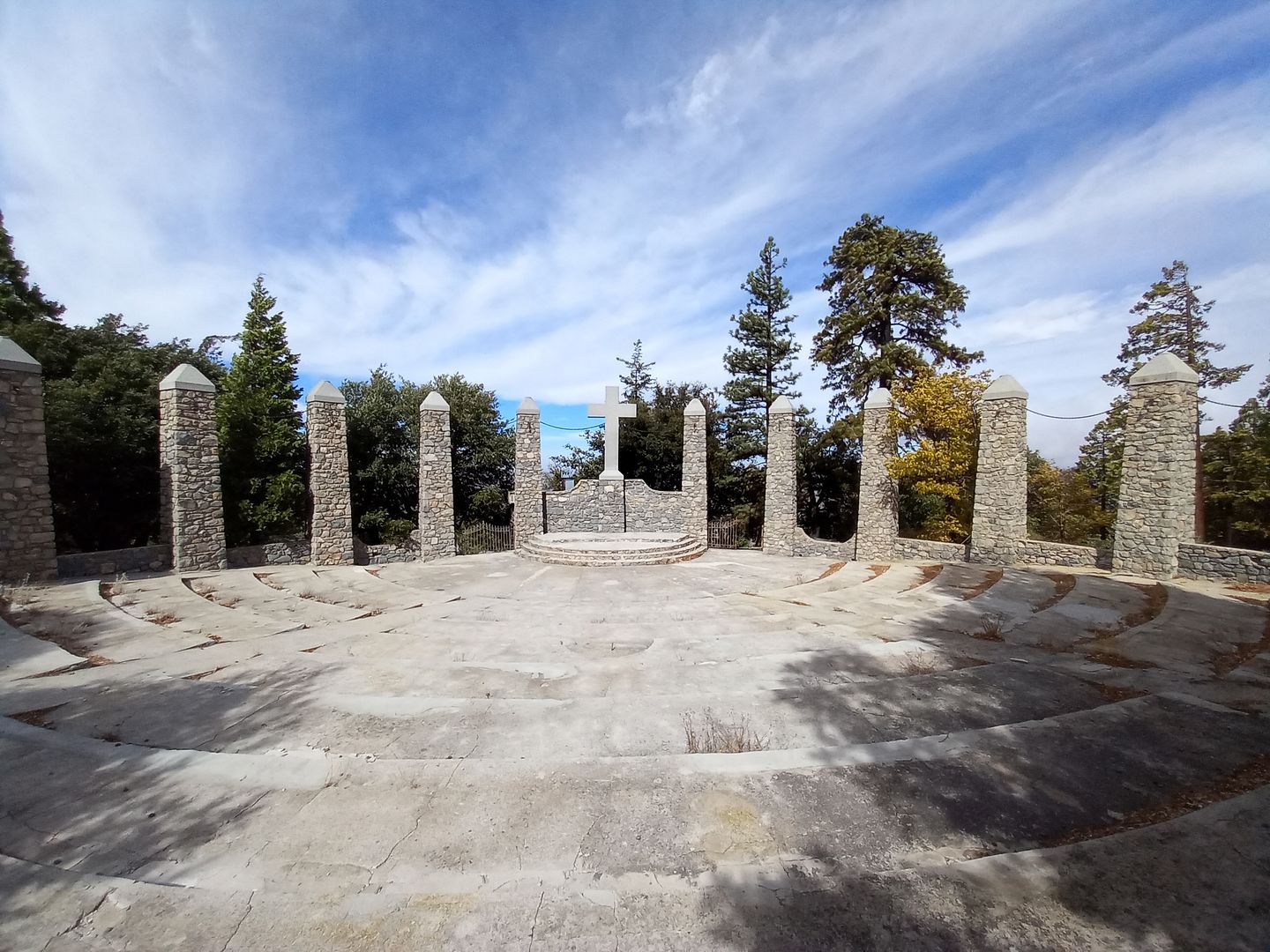
Turns out, the Rim of the World Historical Society arranges regular historic tours of the religious site near Crestline, California in the San Bernardino Mountains—so I was grateful to find a sanctioned way to visit "Camp Mozumdar."
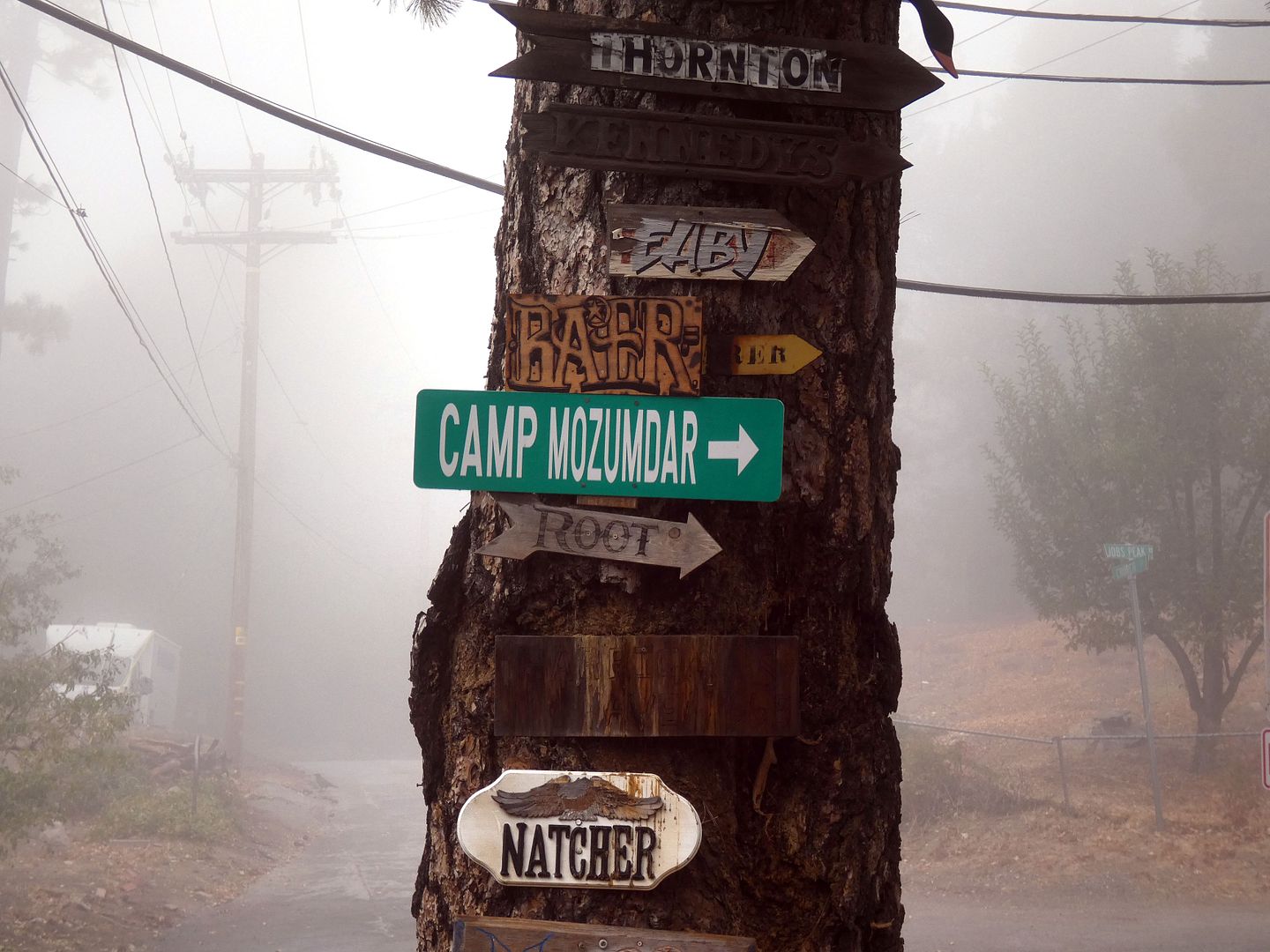
And while I didn't need any special vehicle to get there, I wasn't prepared for the mountain weather I'd encounter on an unusually wintry October morning.
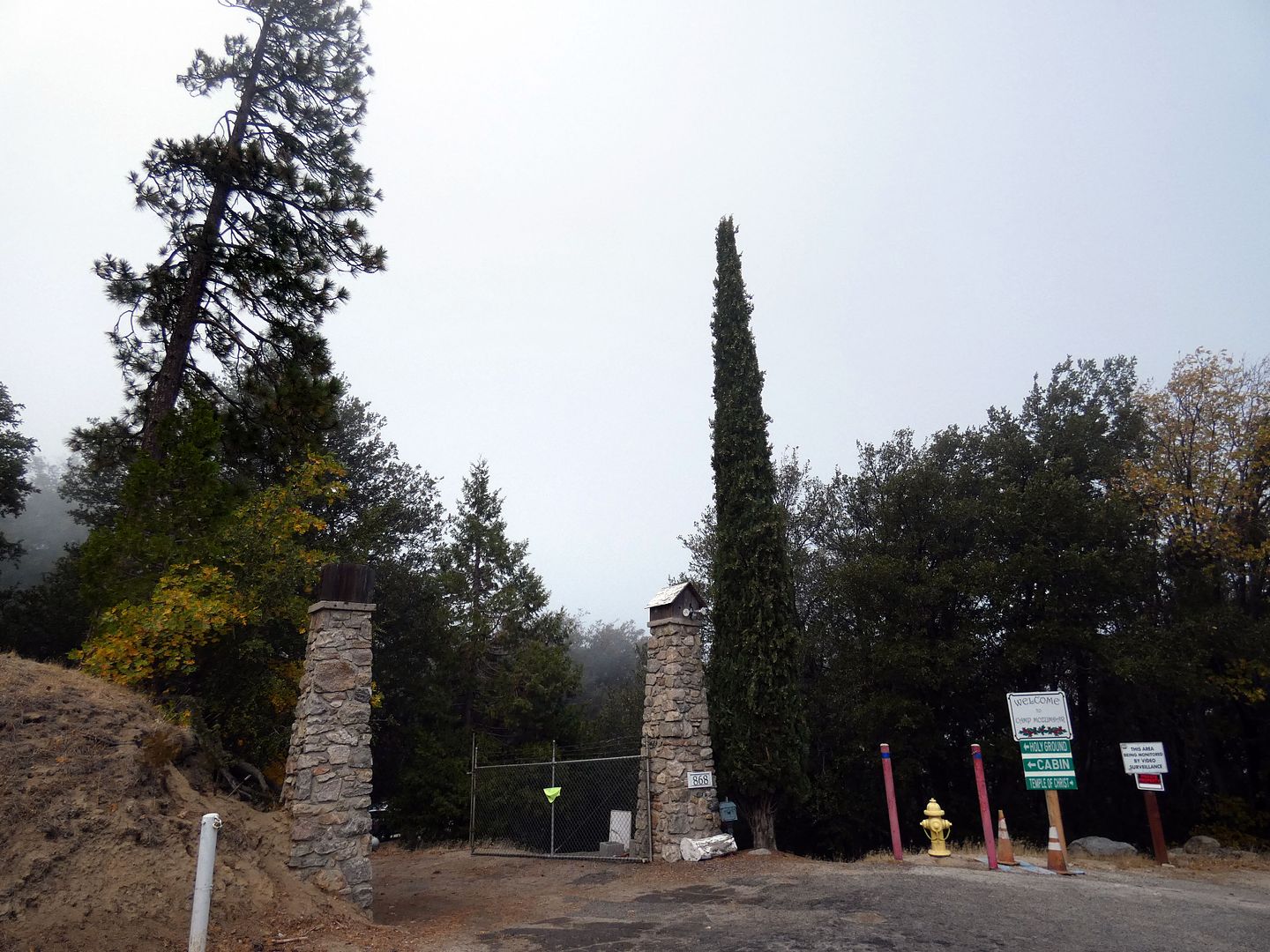
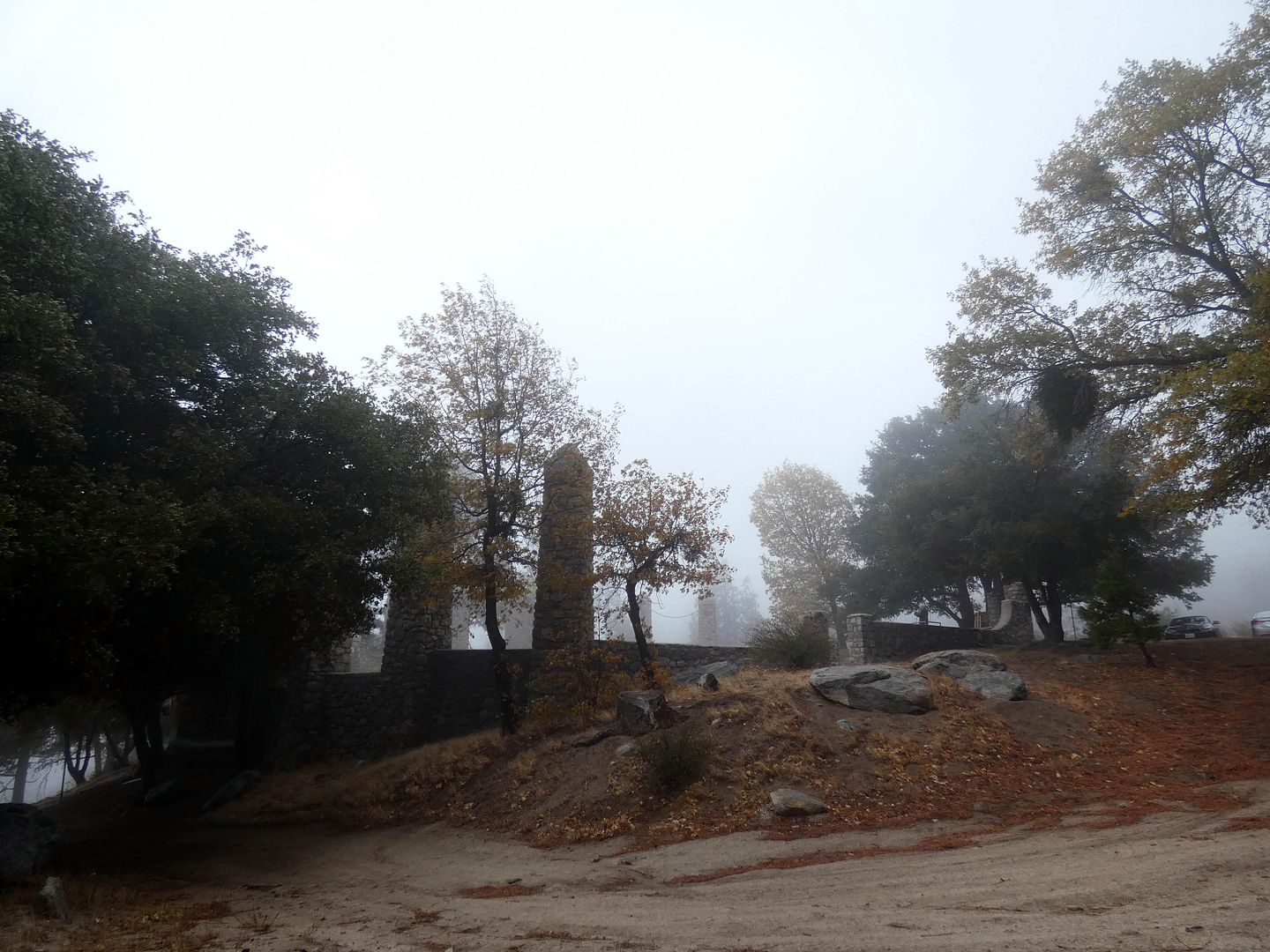

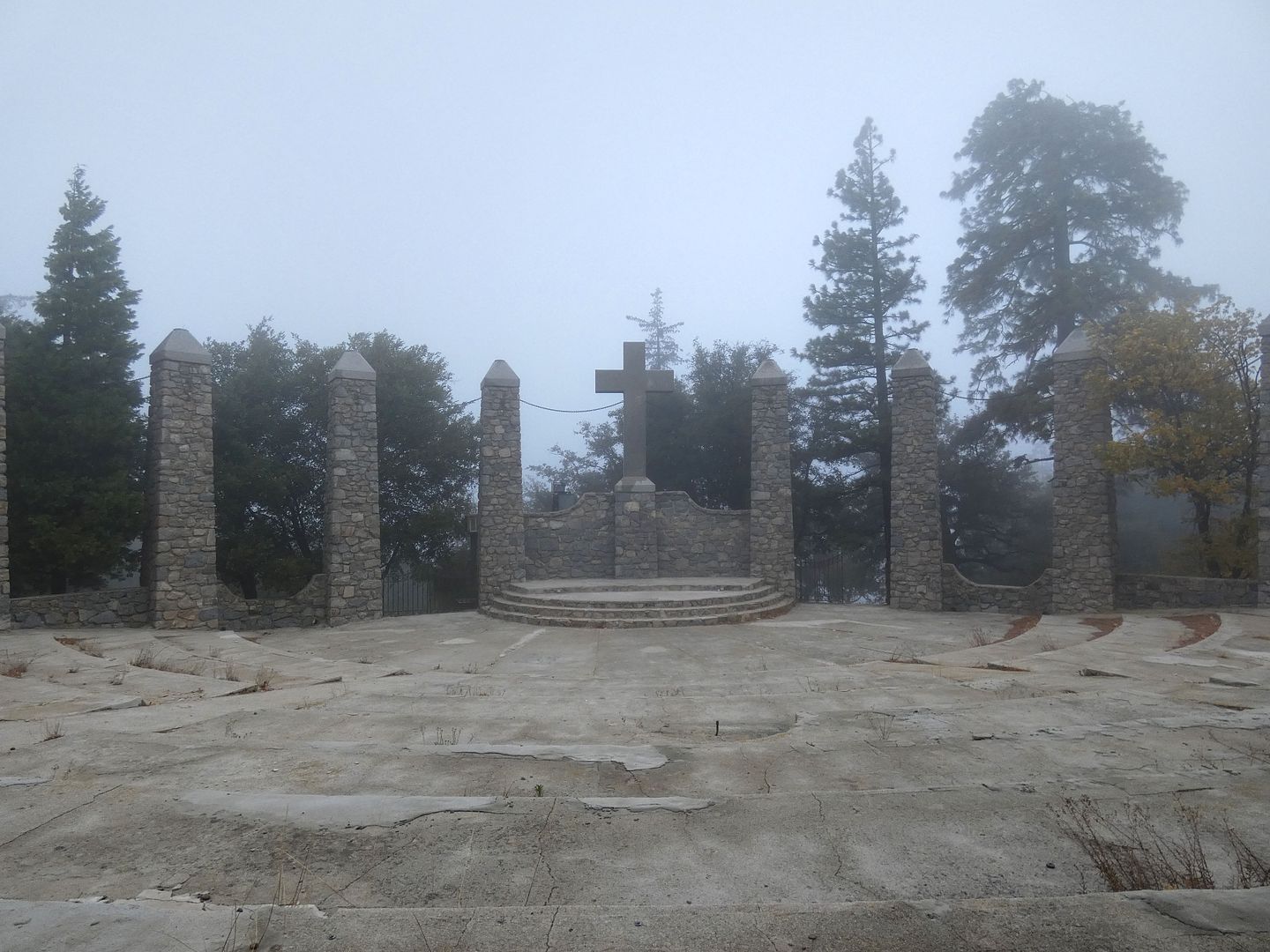
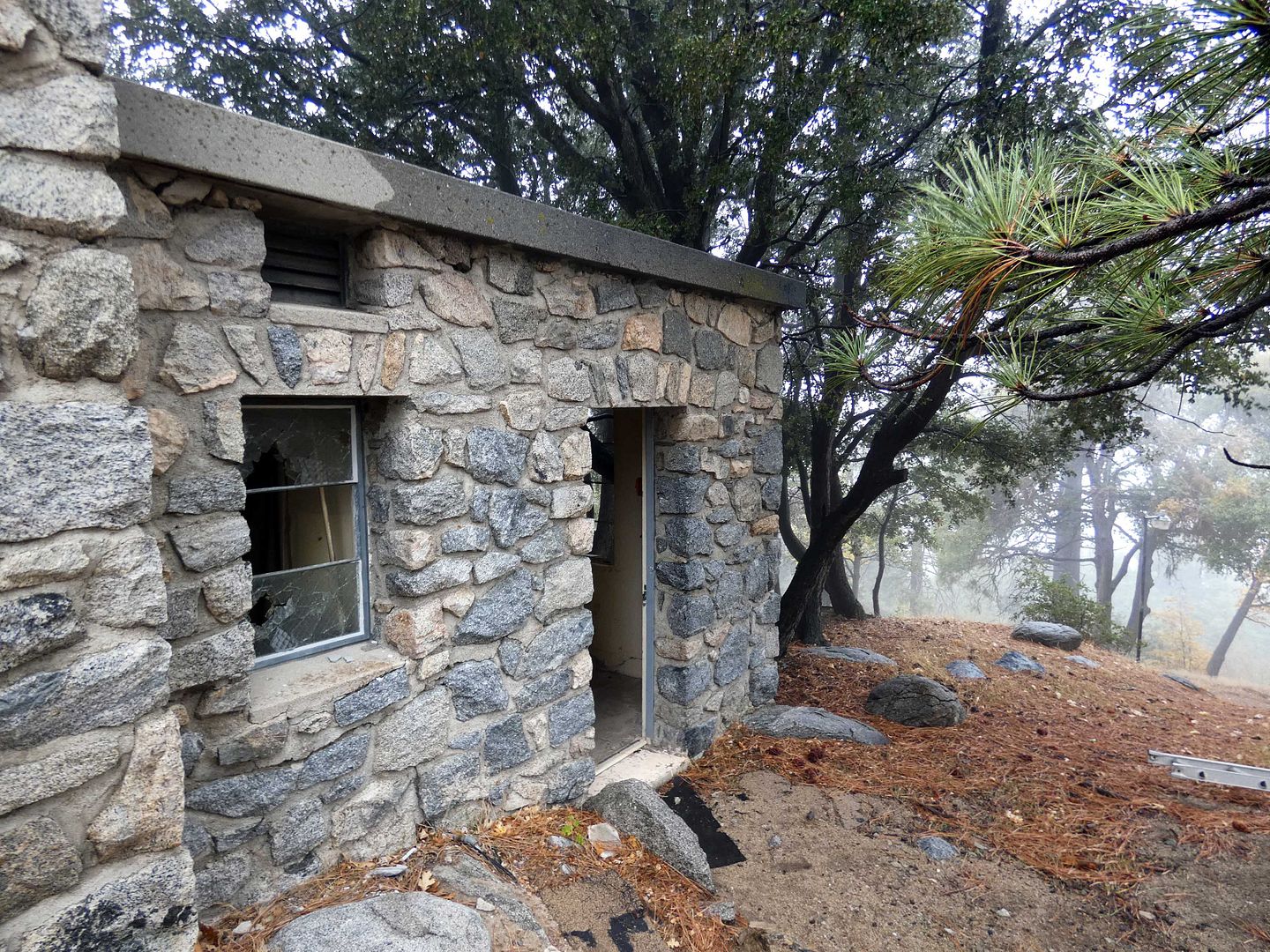
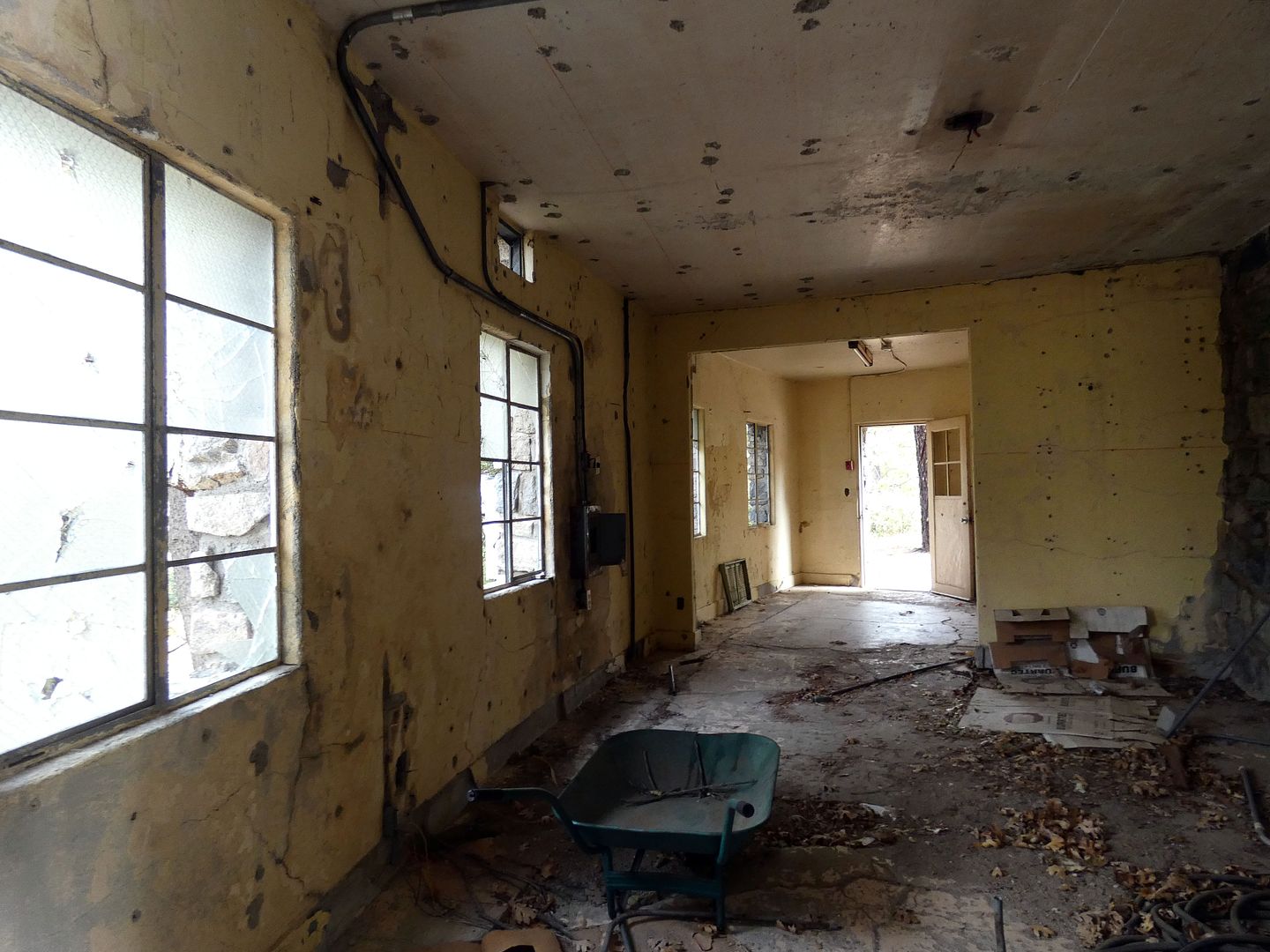
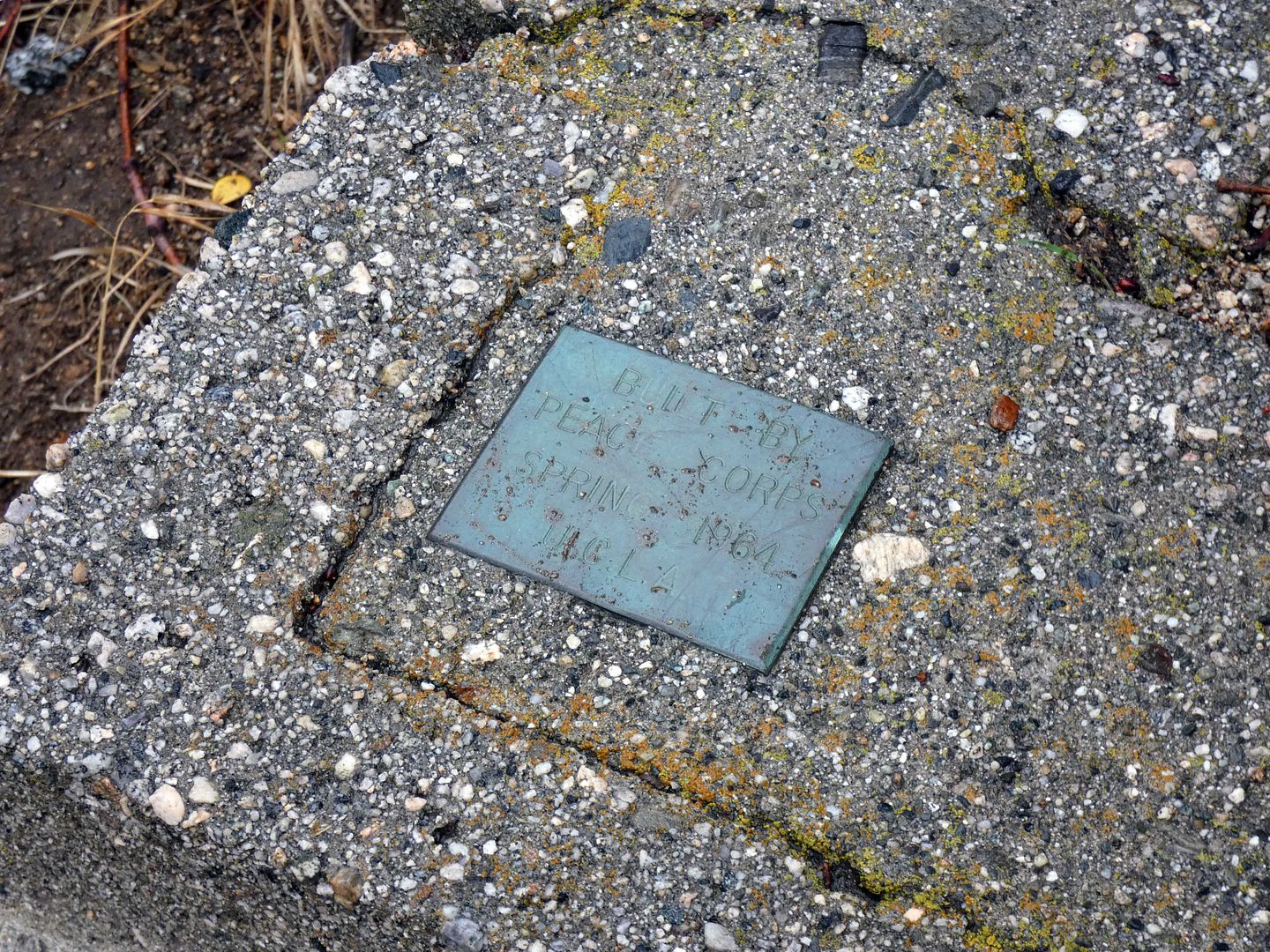
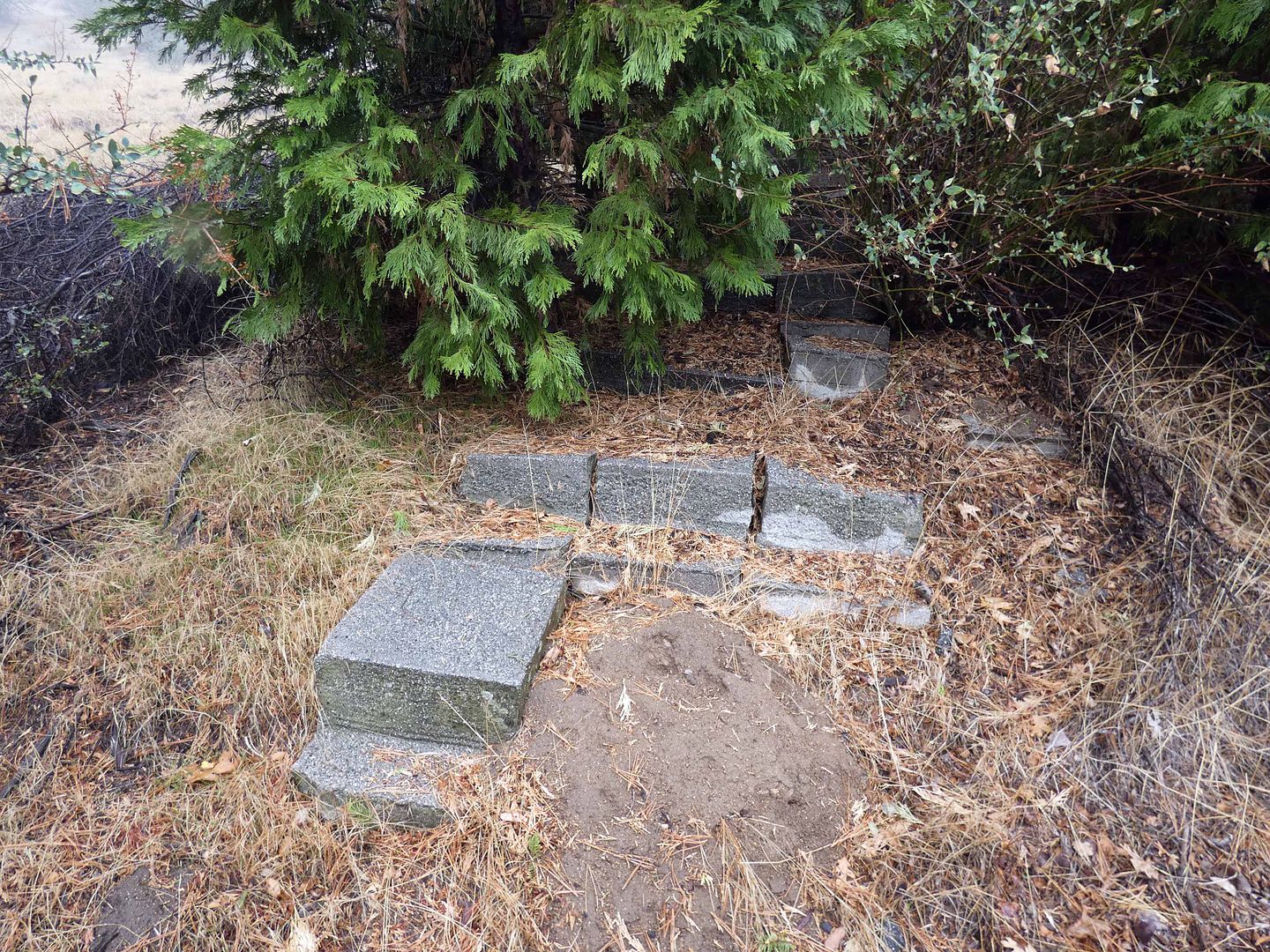
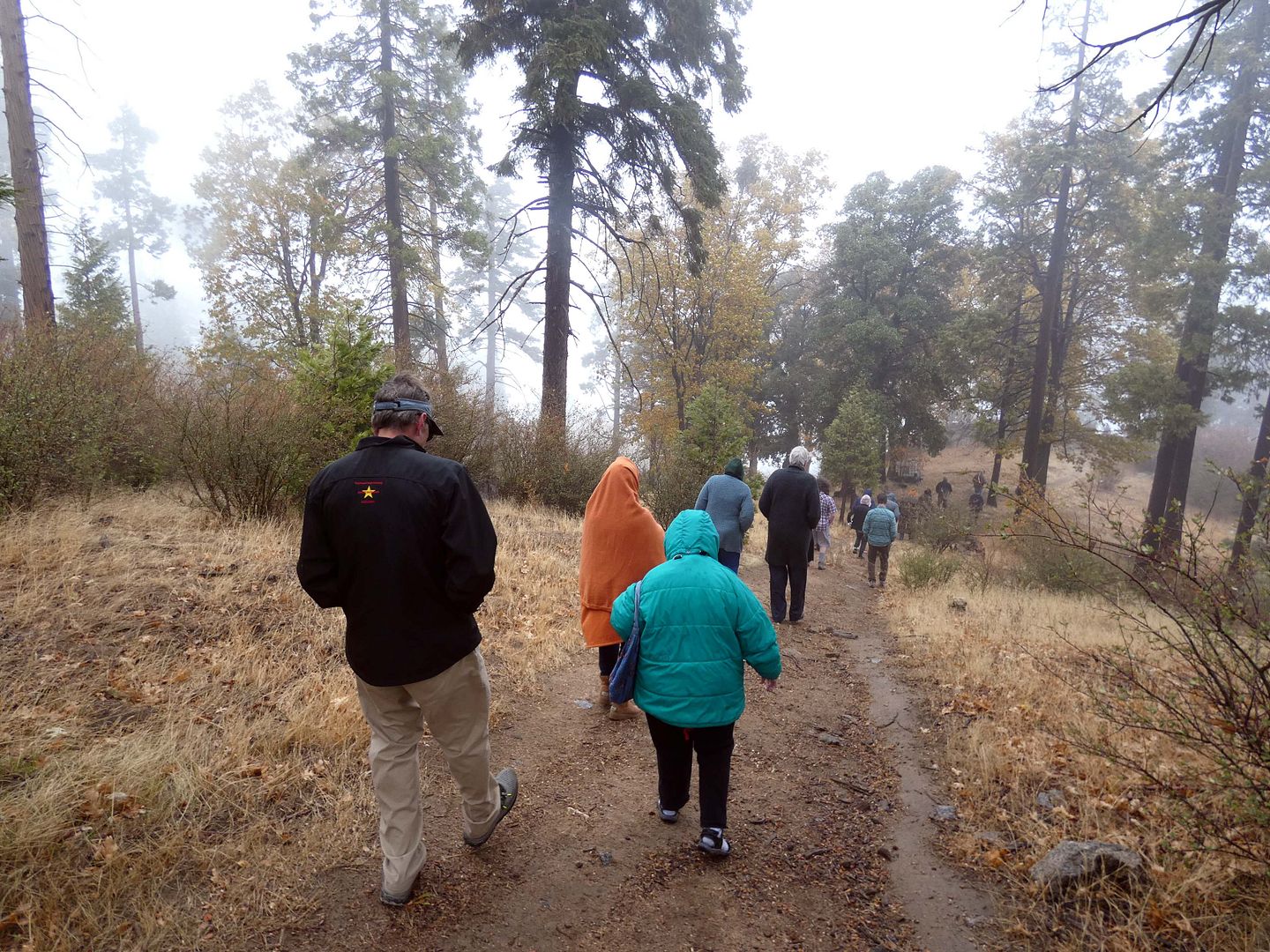
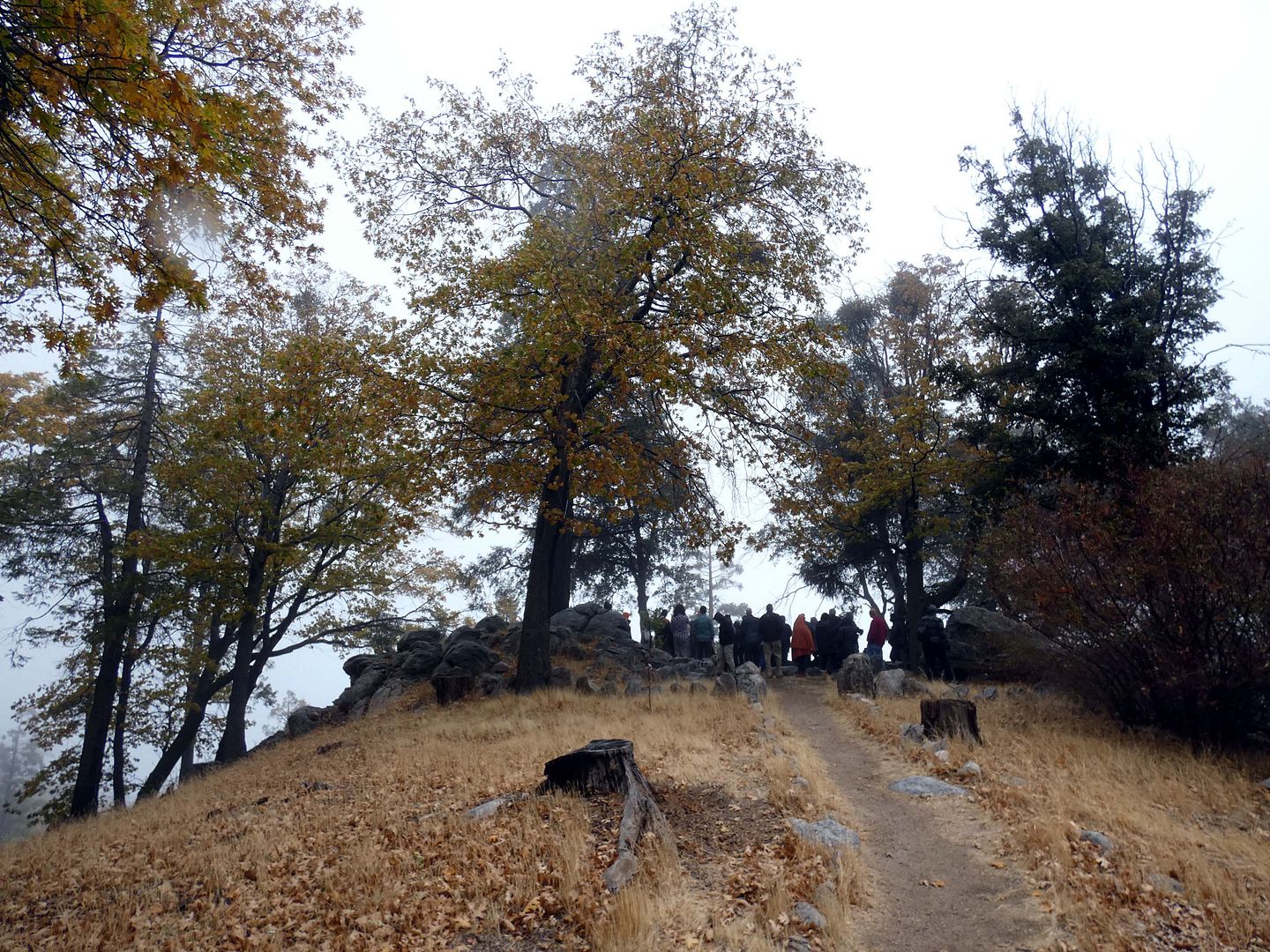
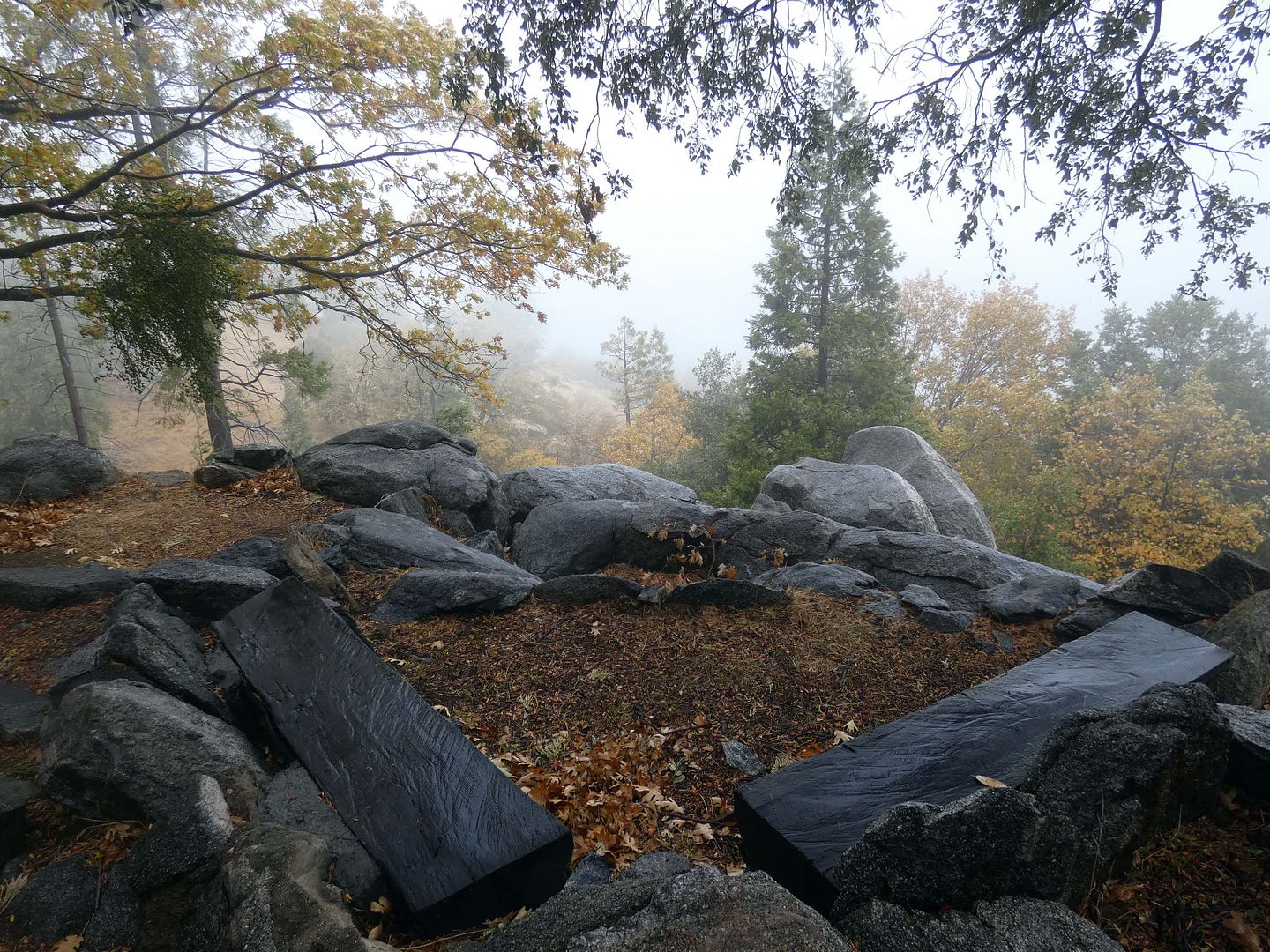
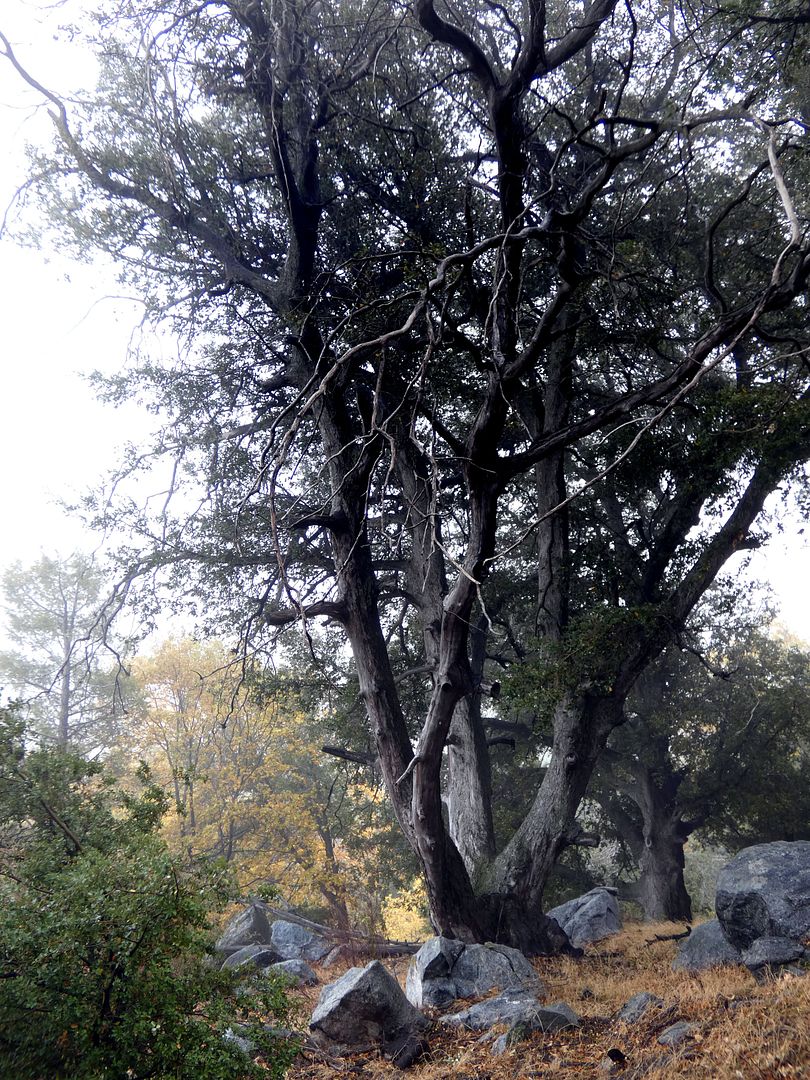
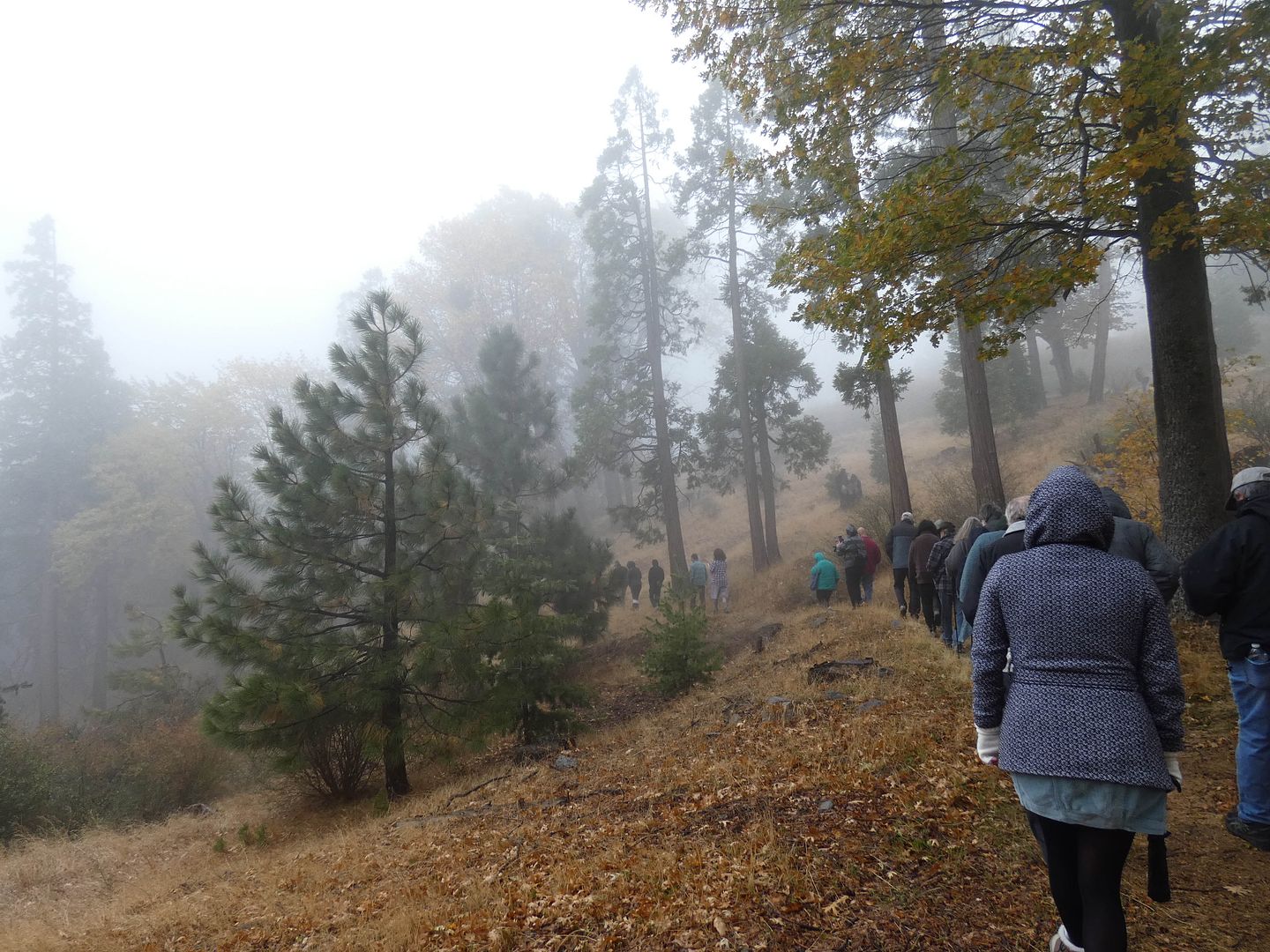
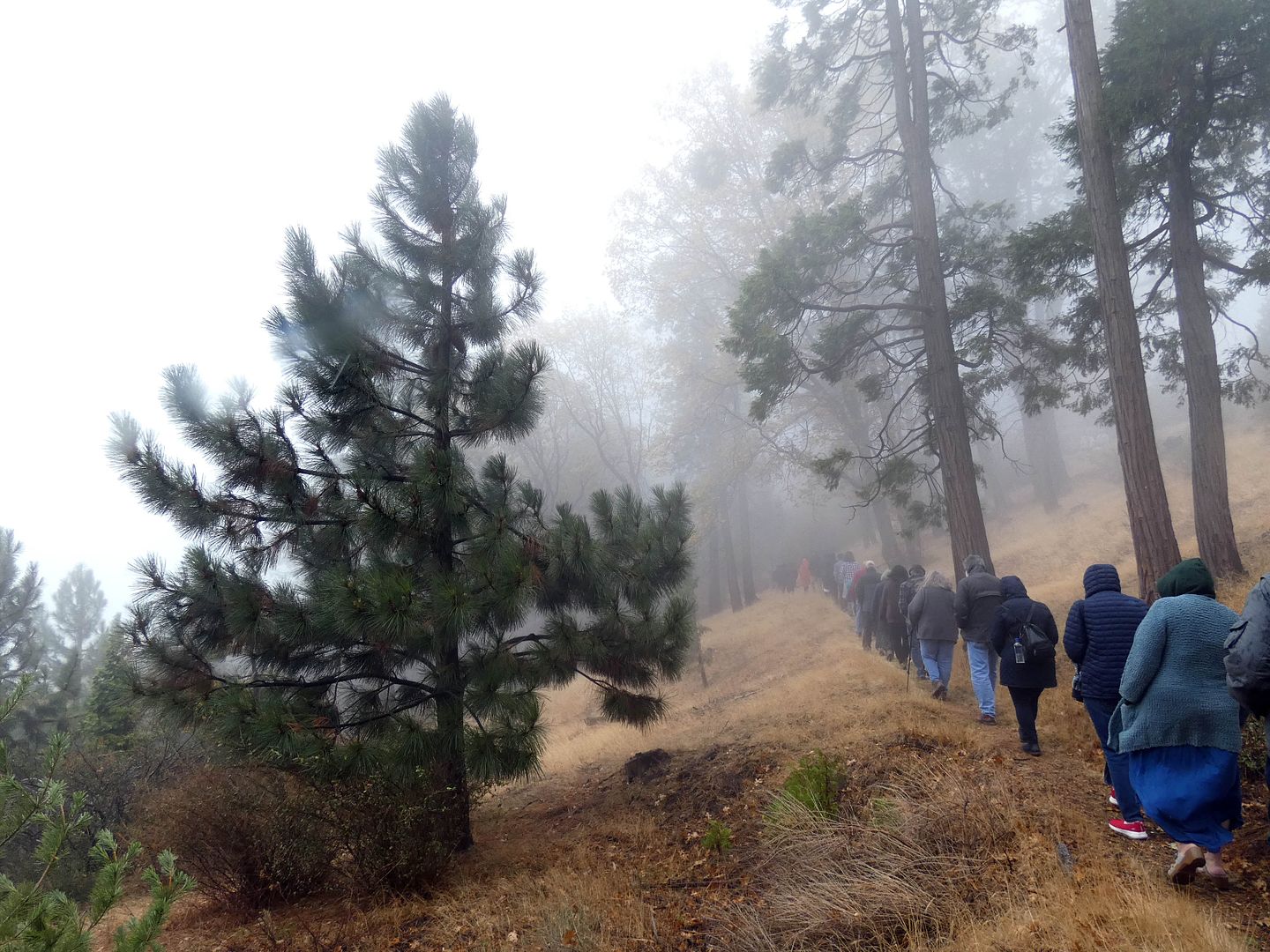
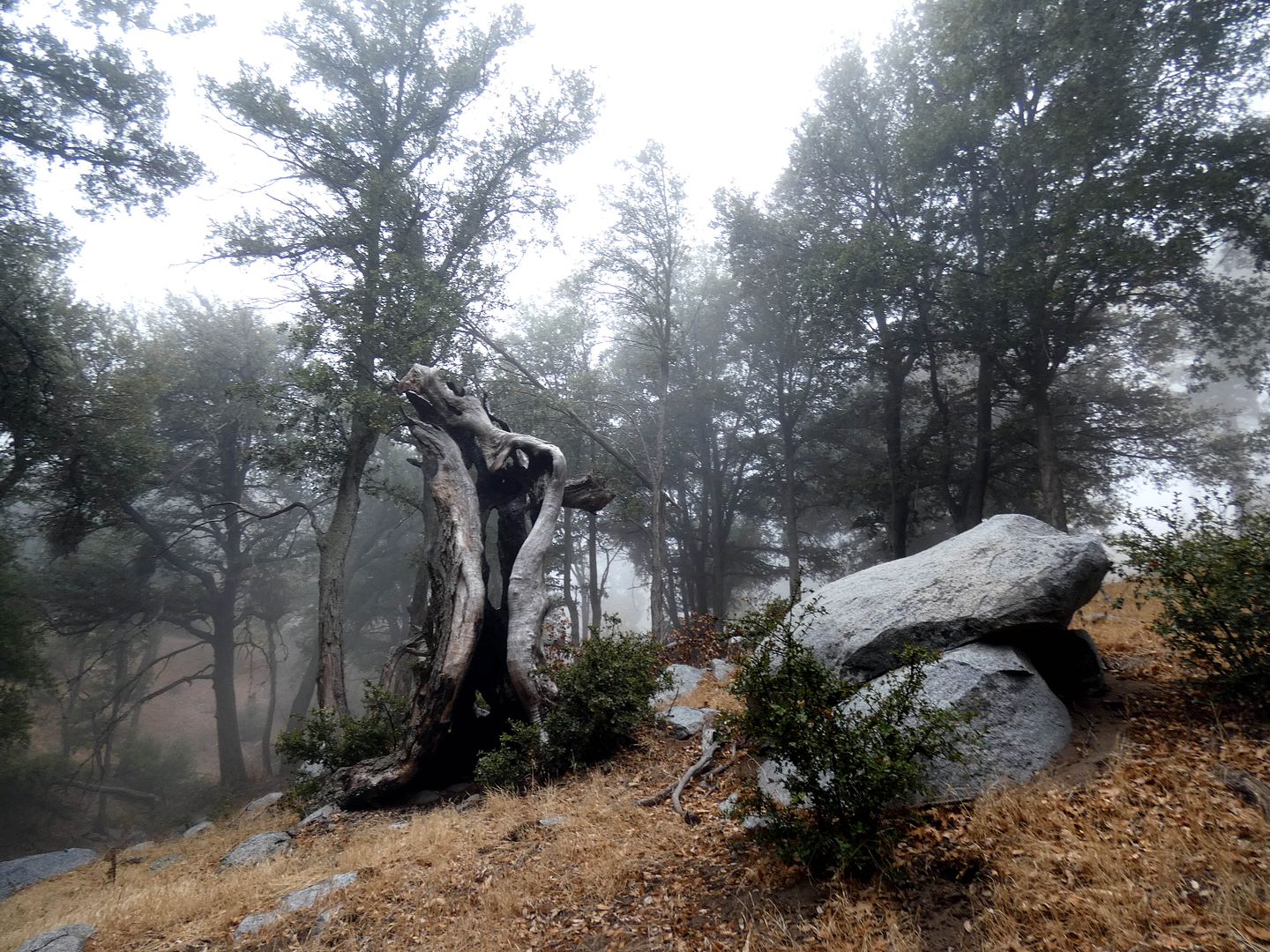

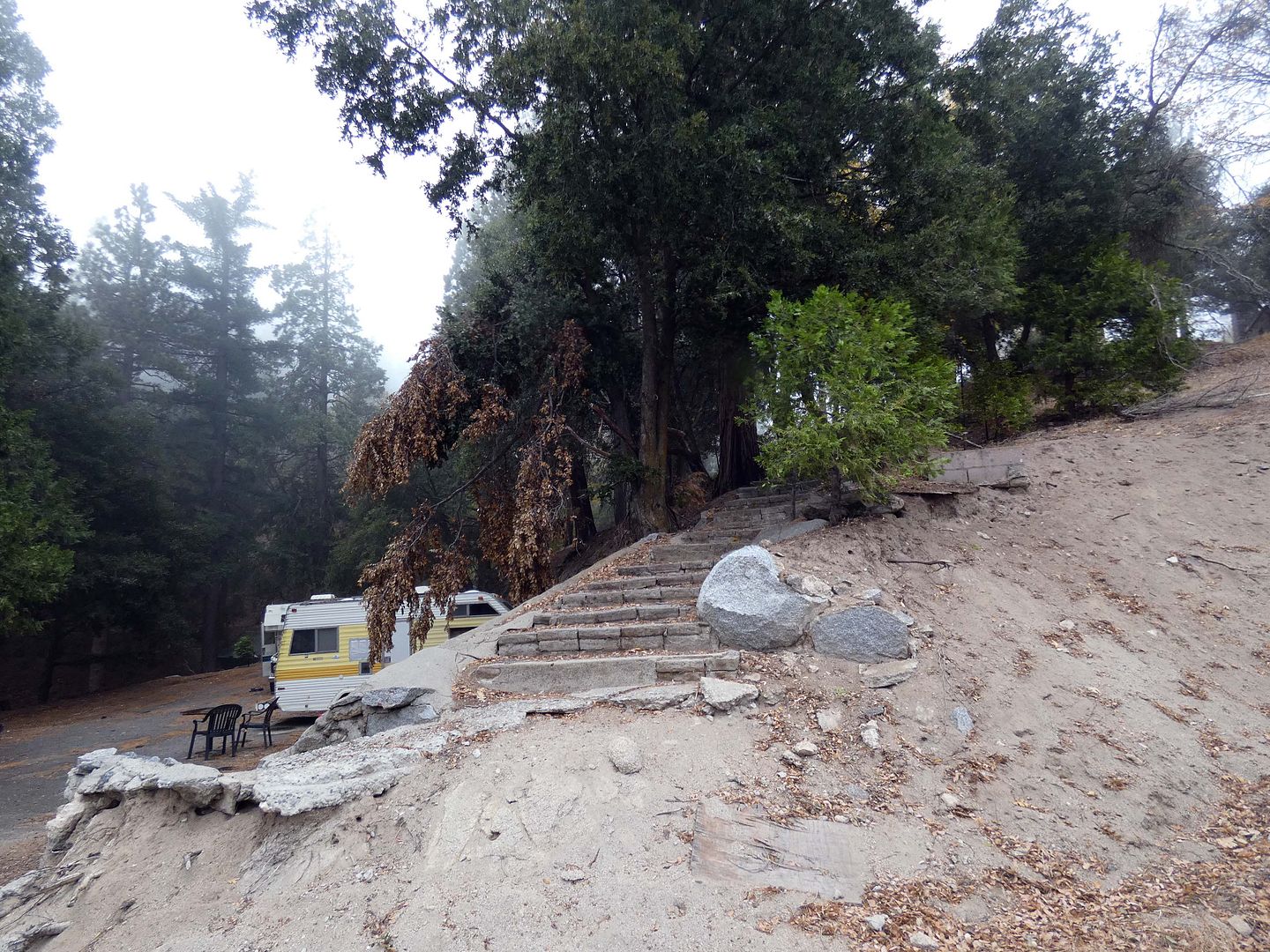
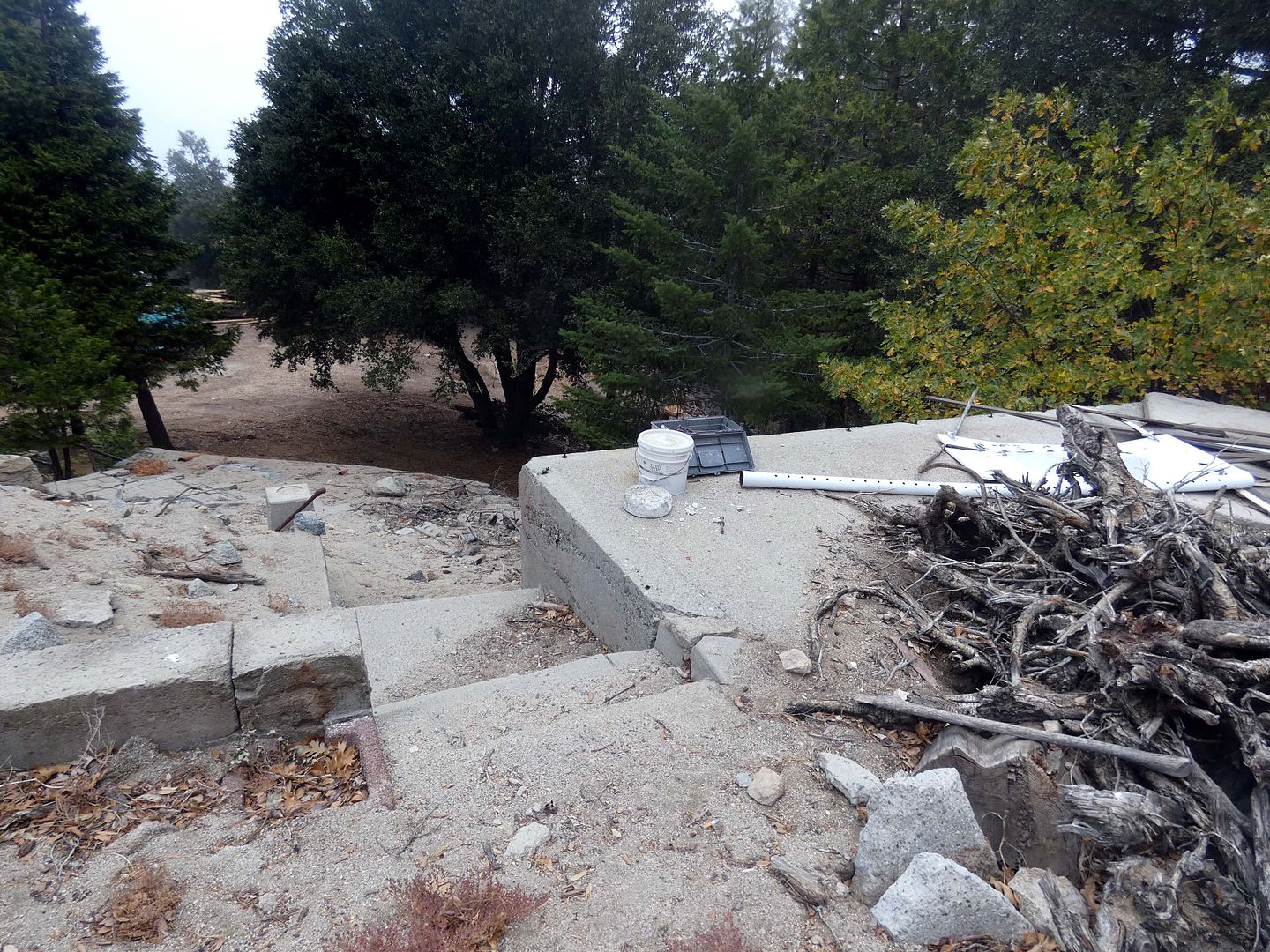
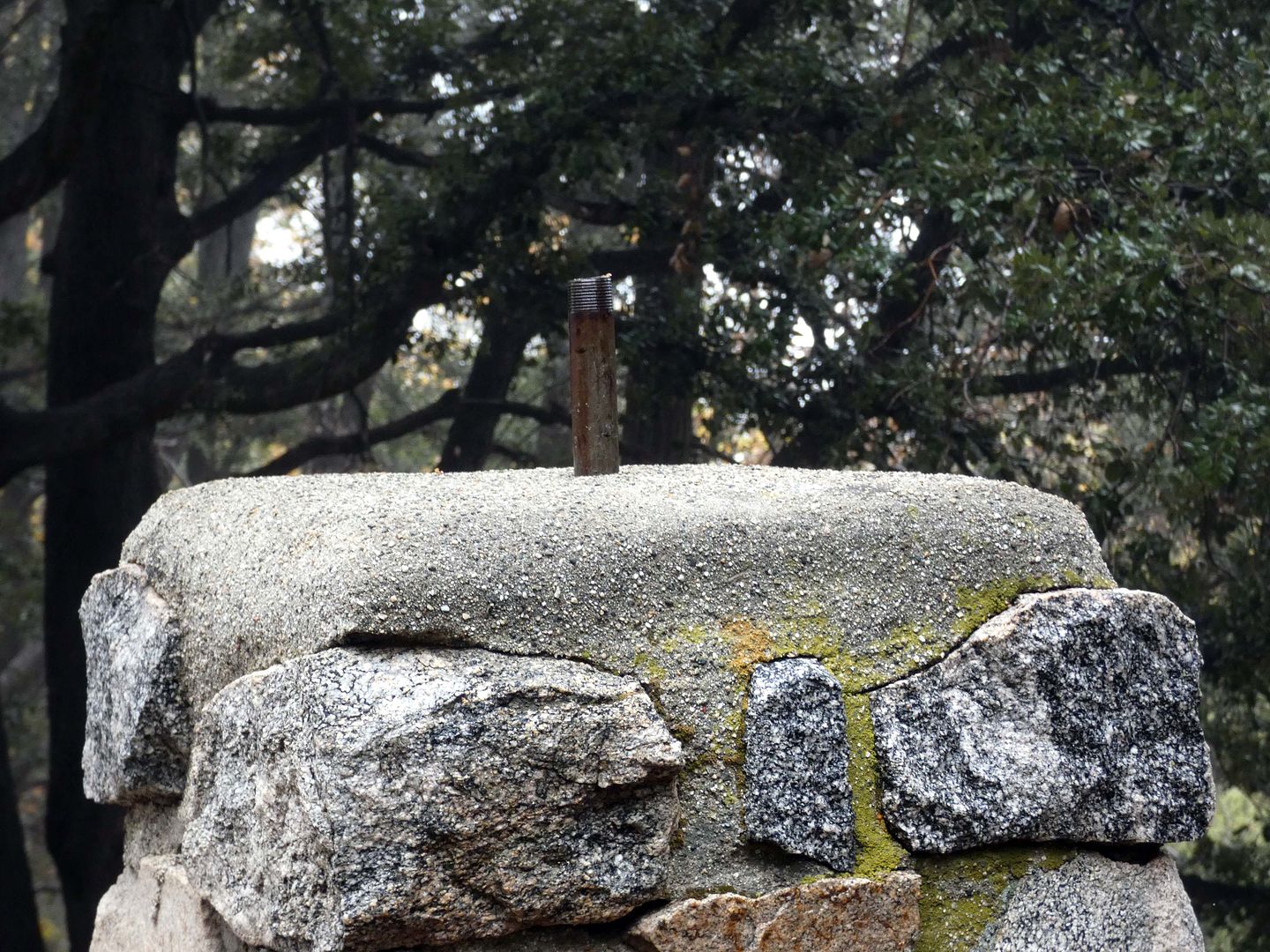
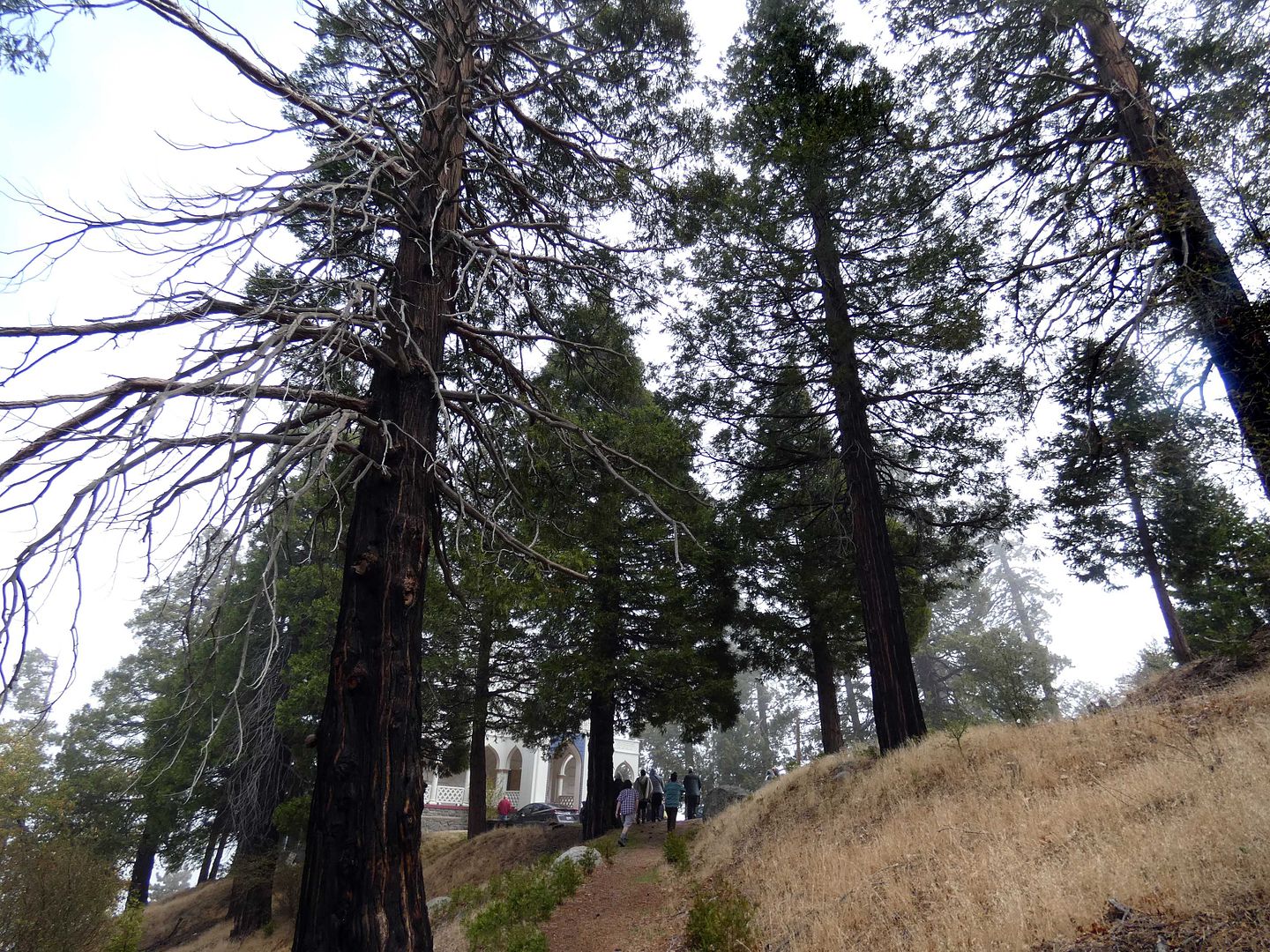
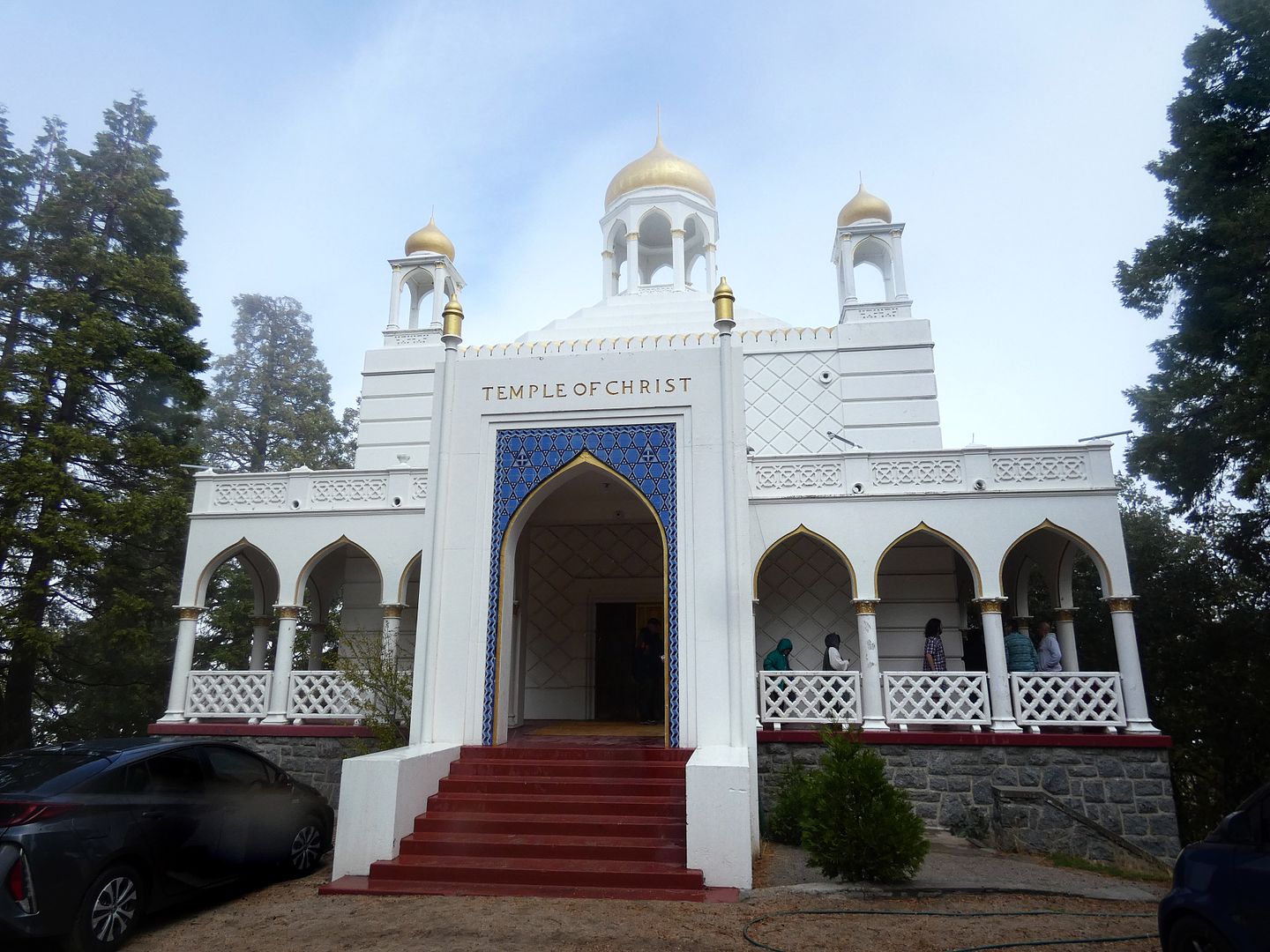
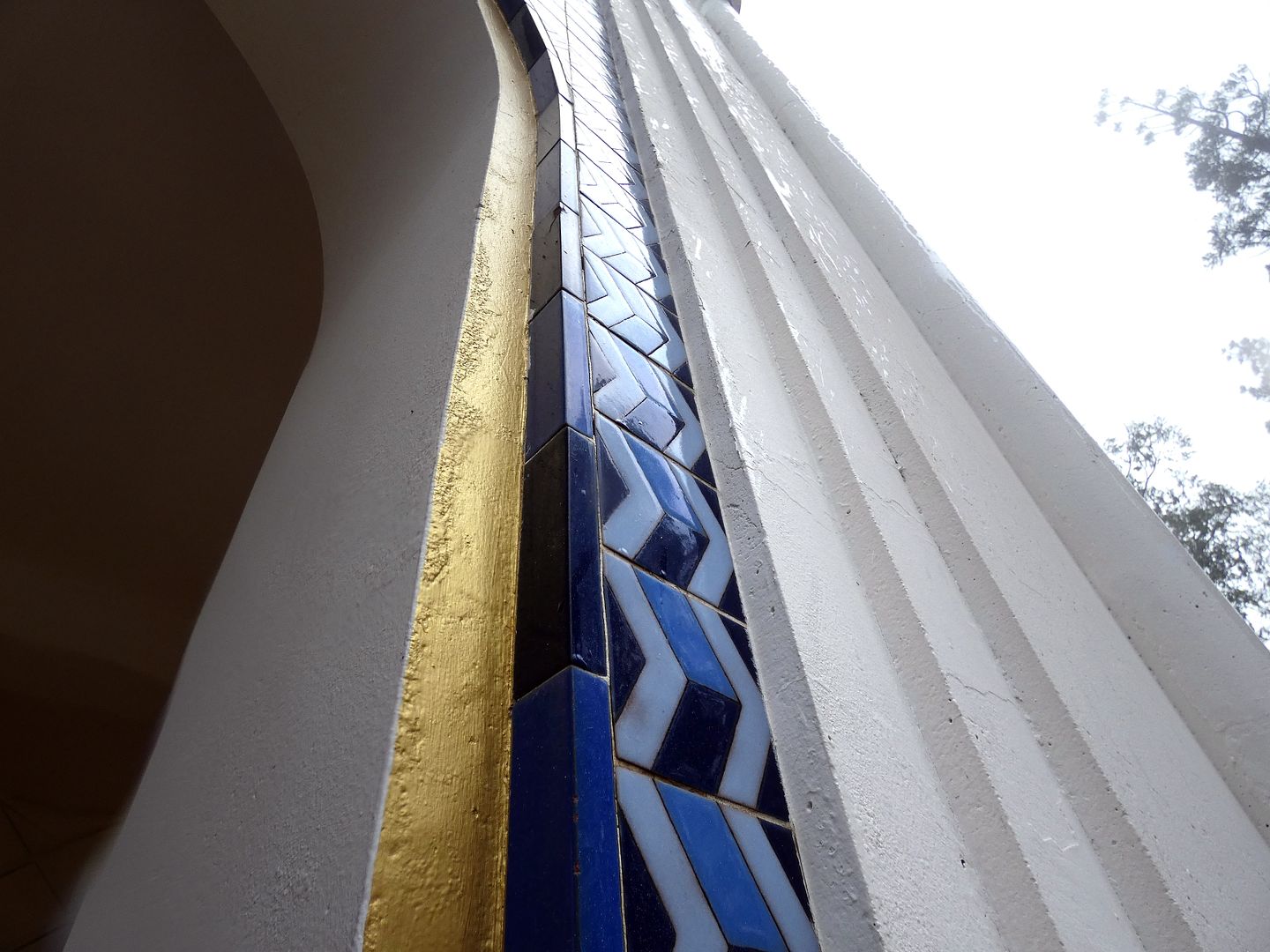
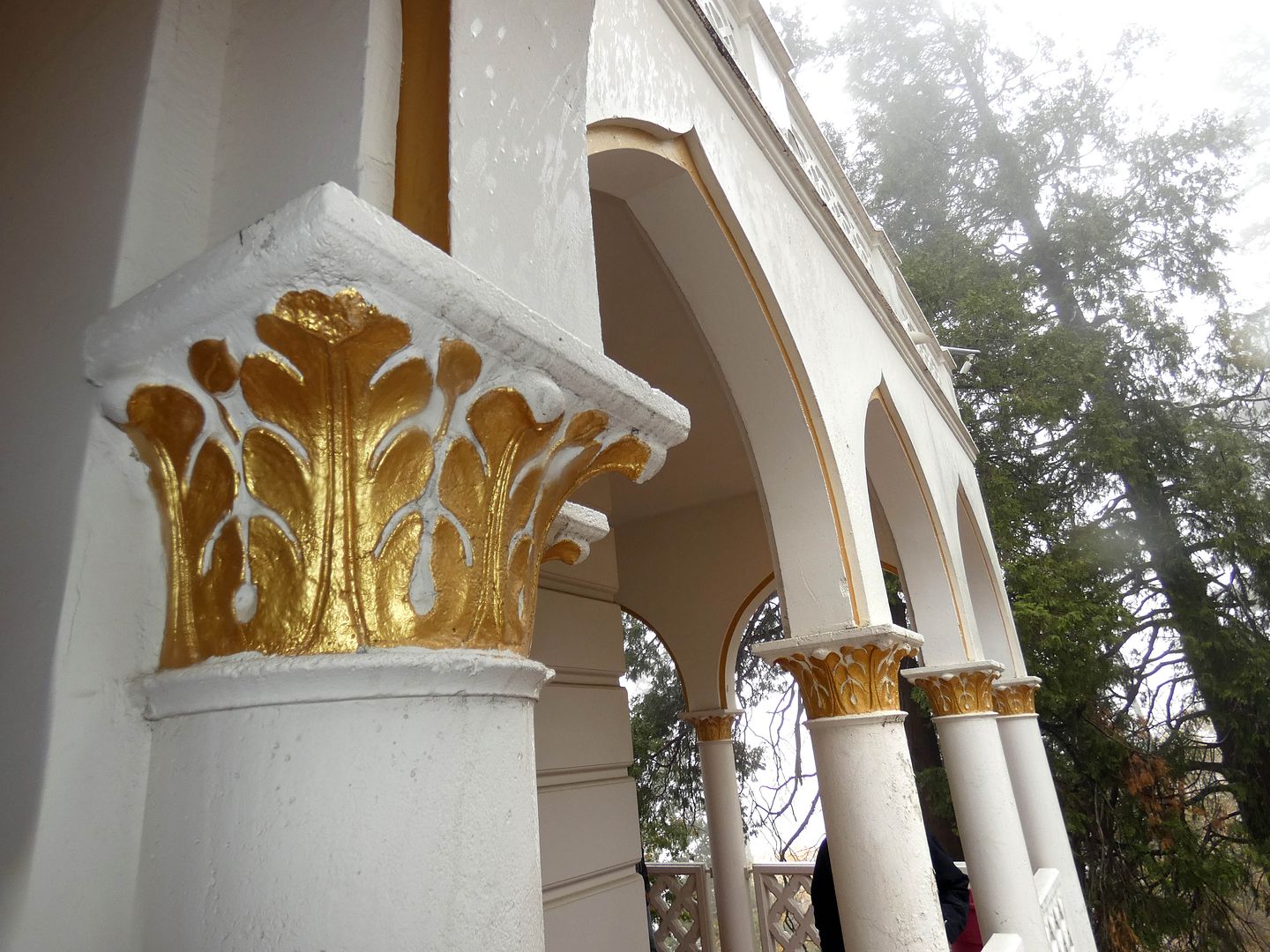
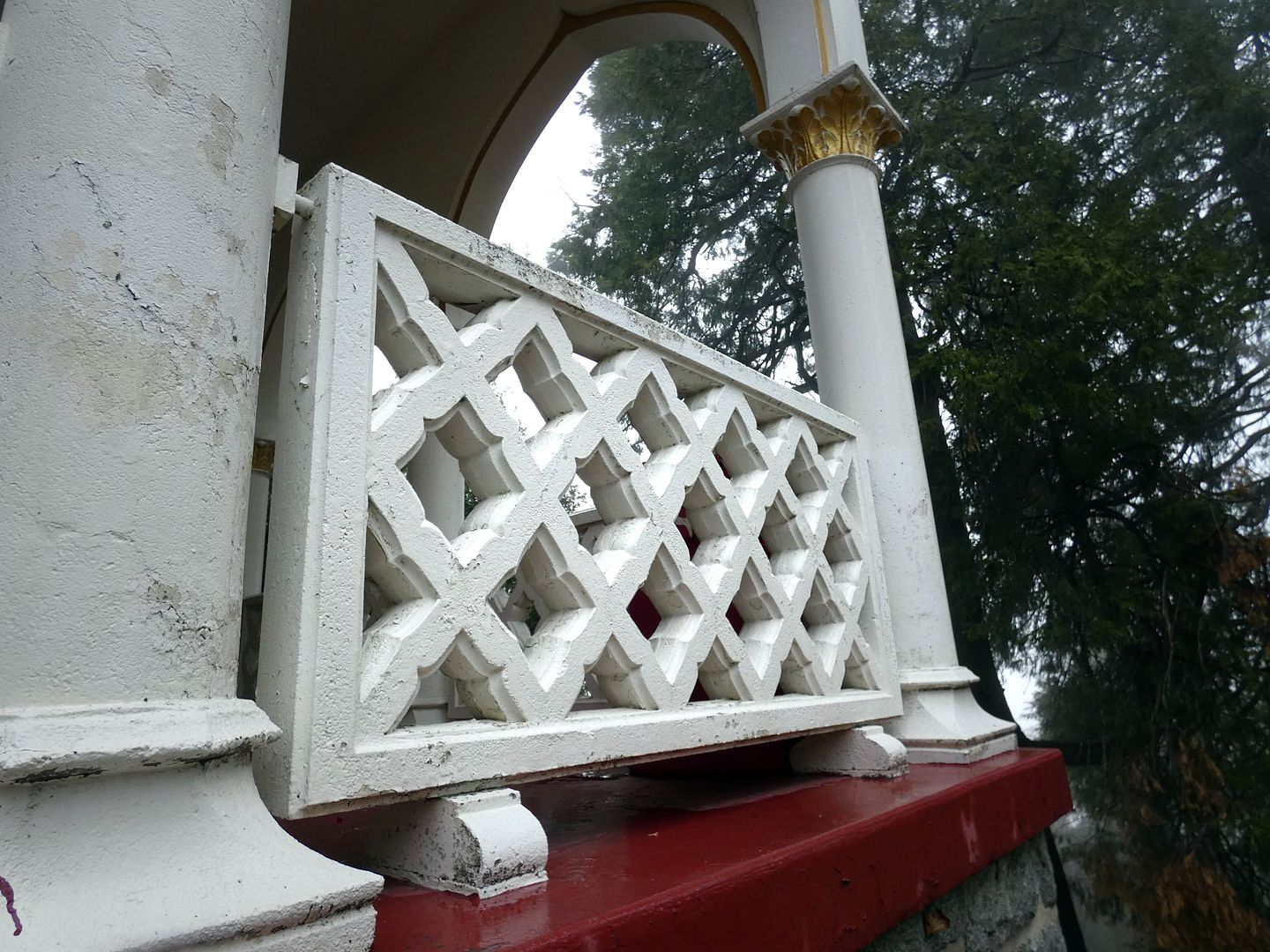
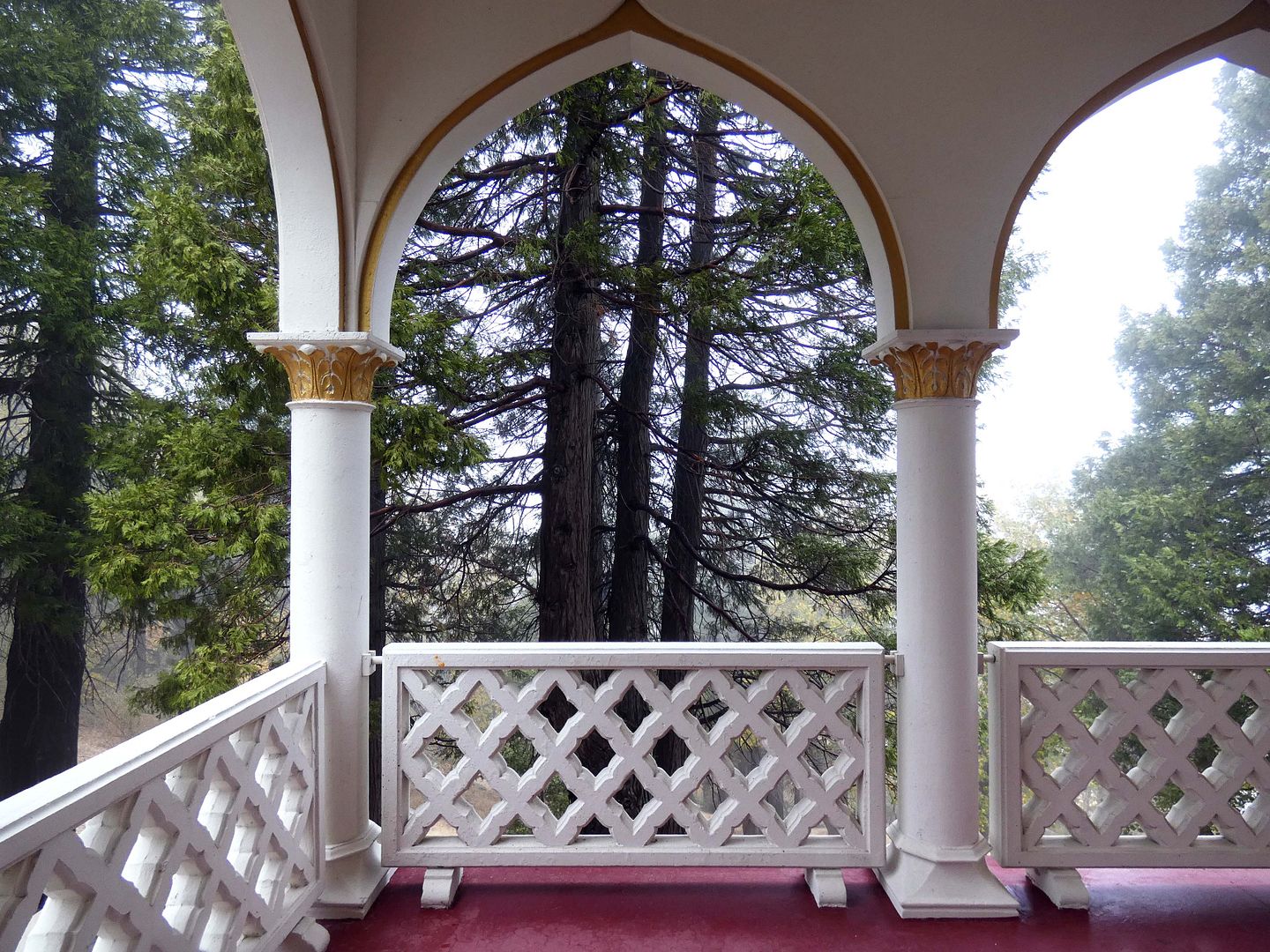
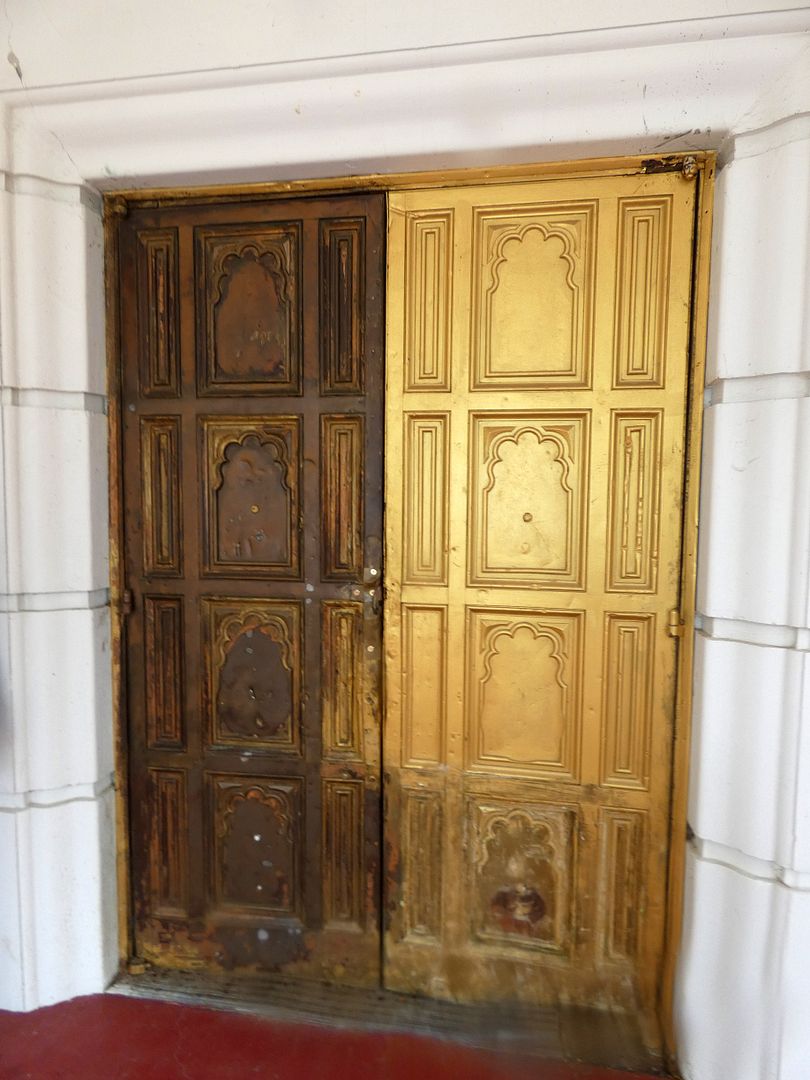
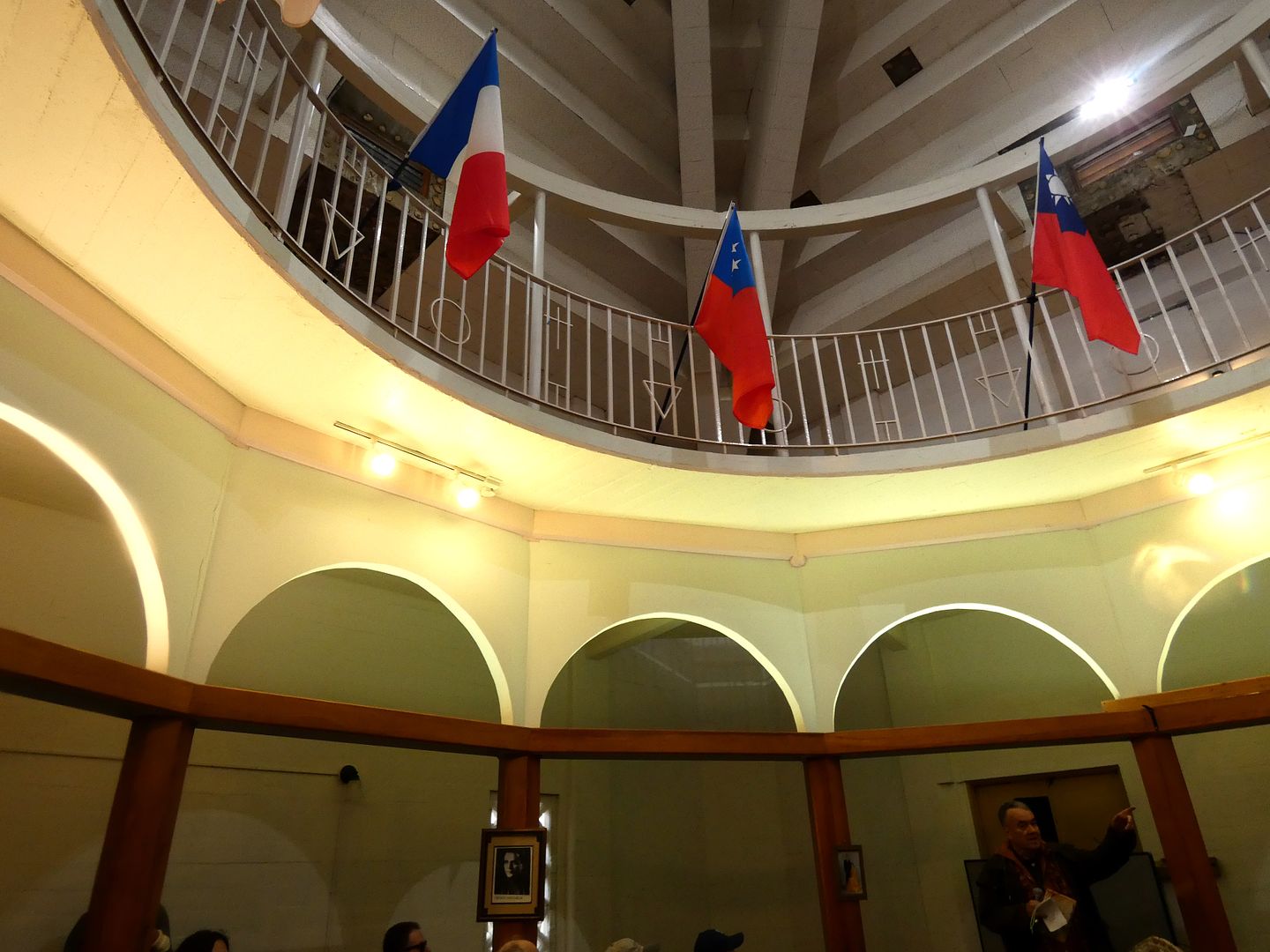
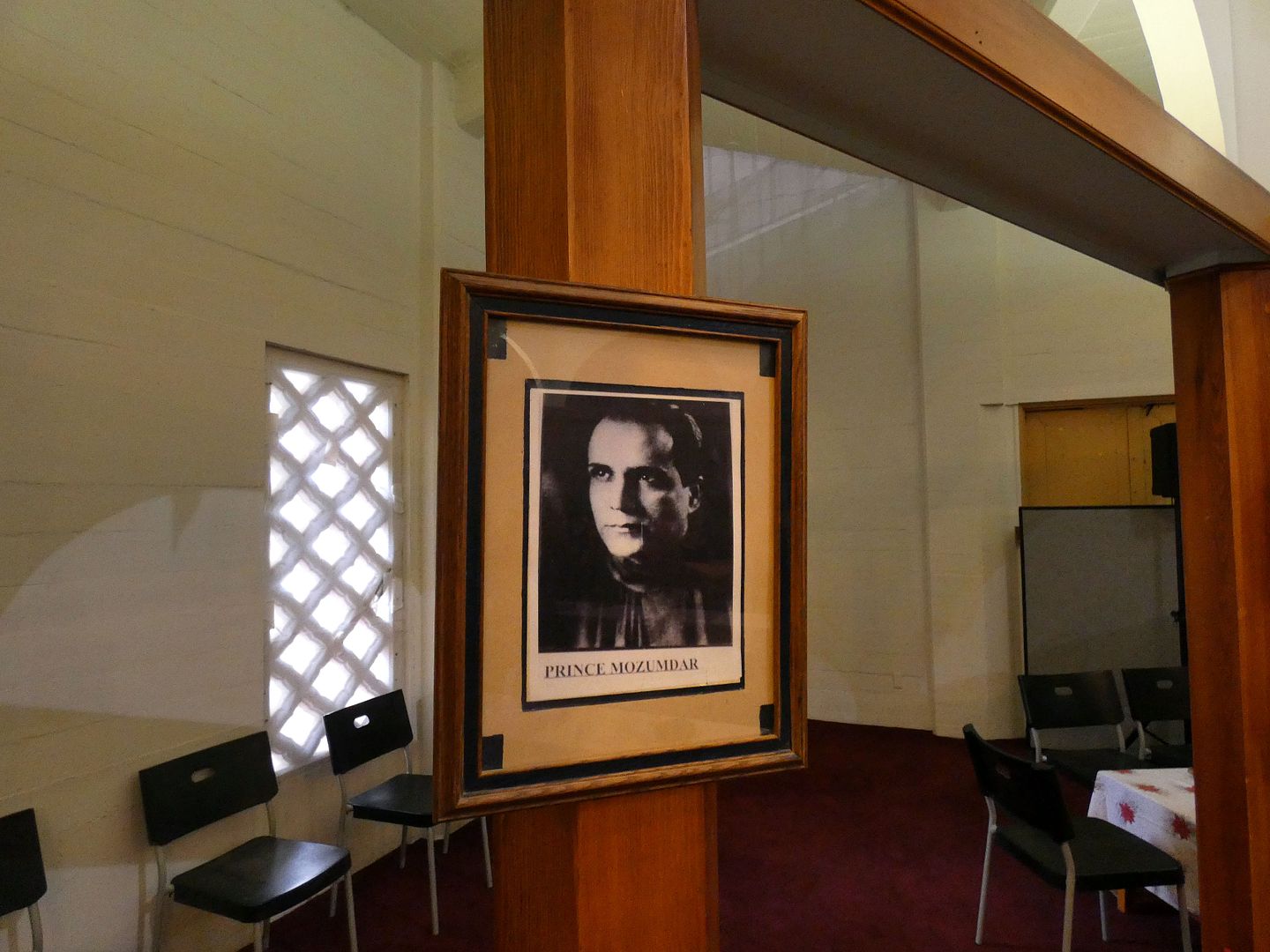
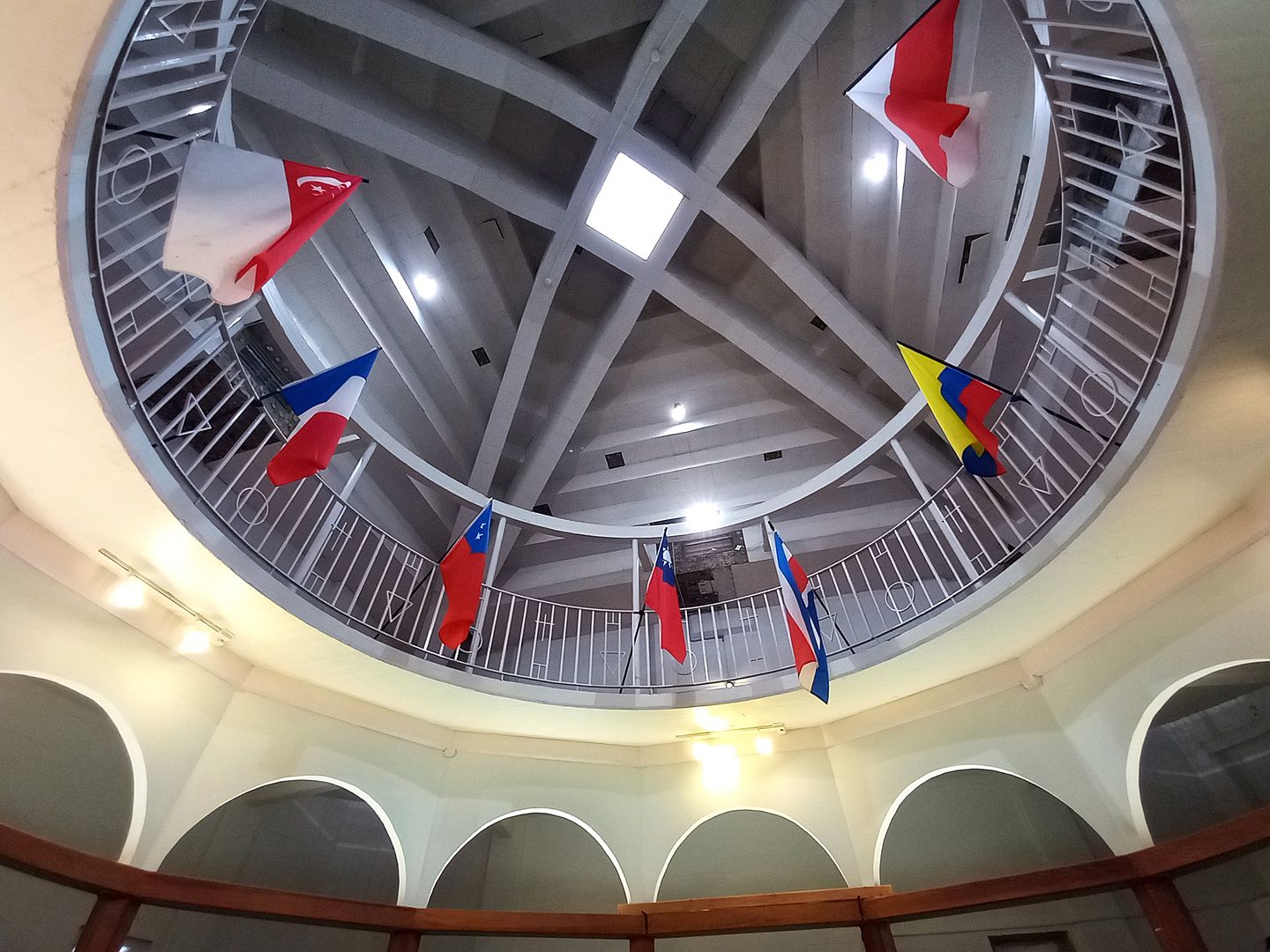
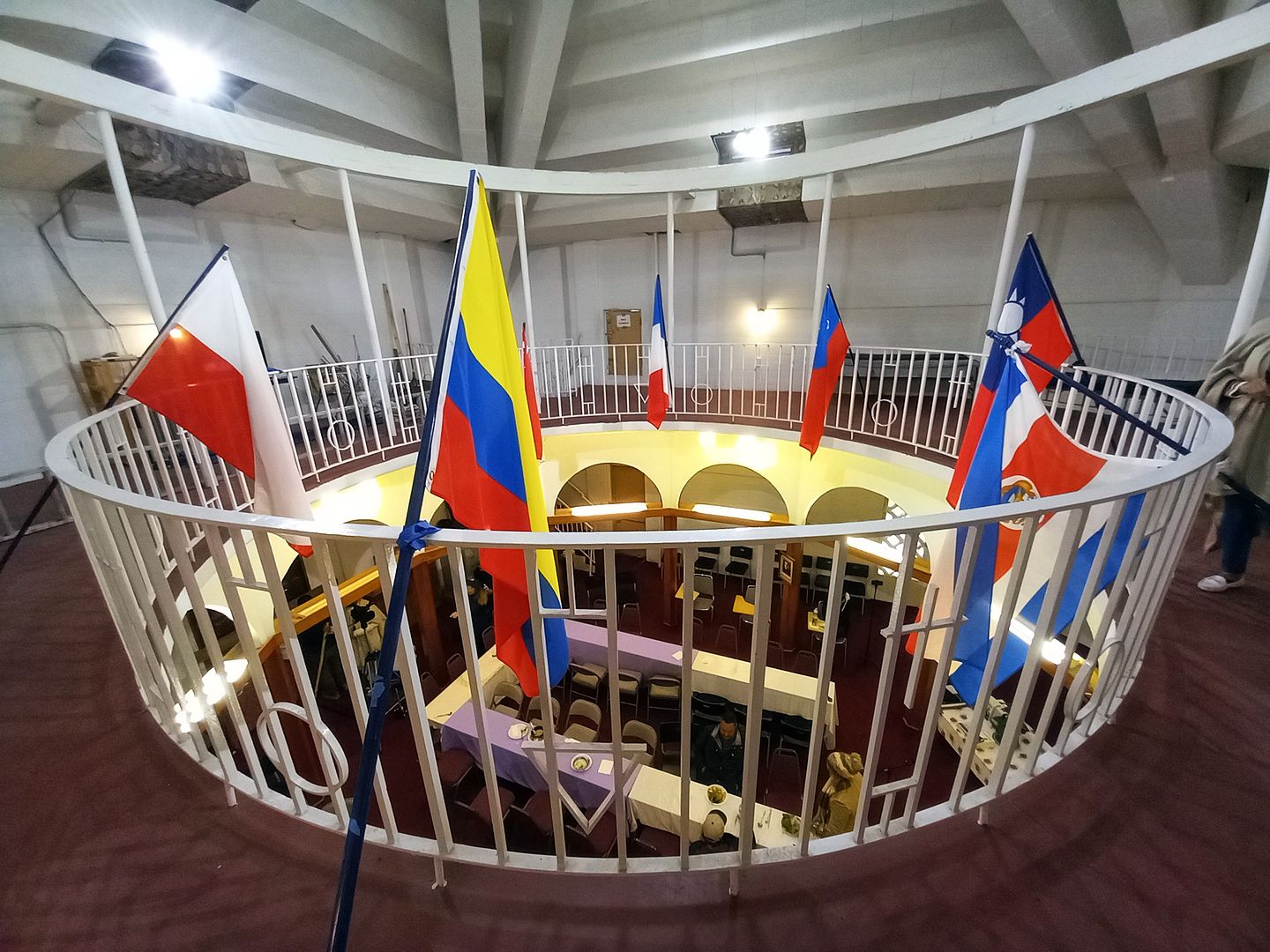


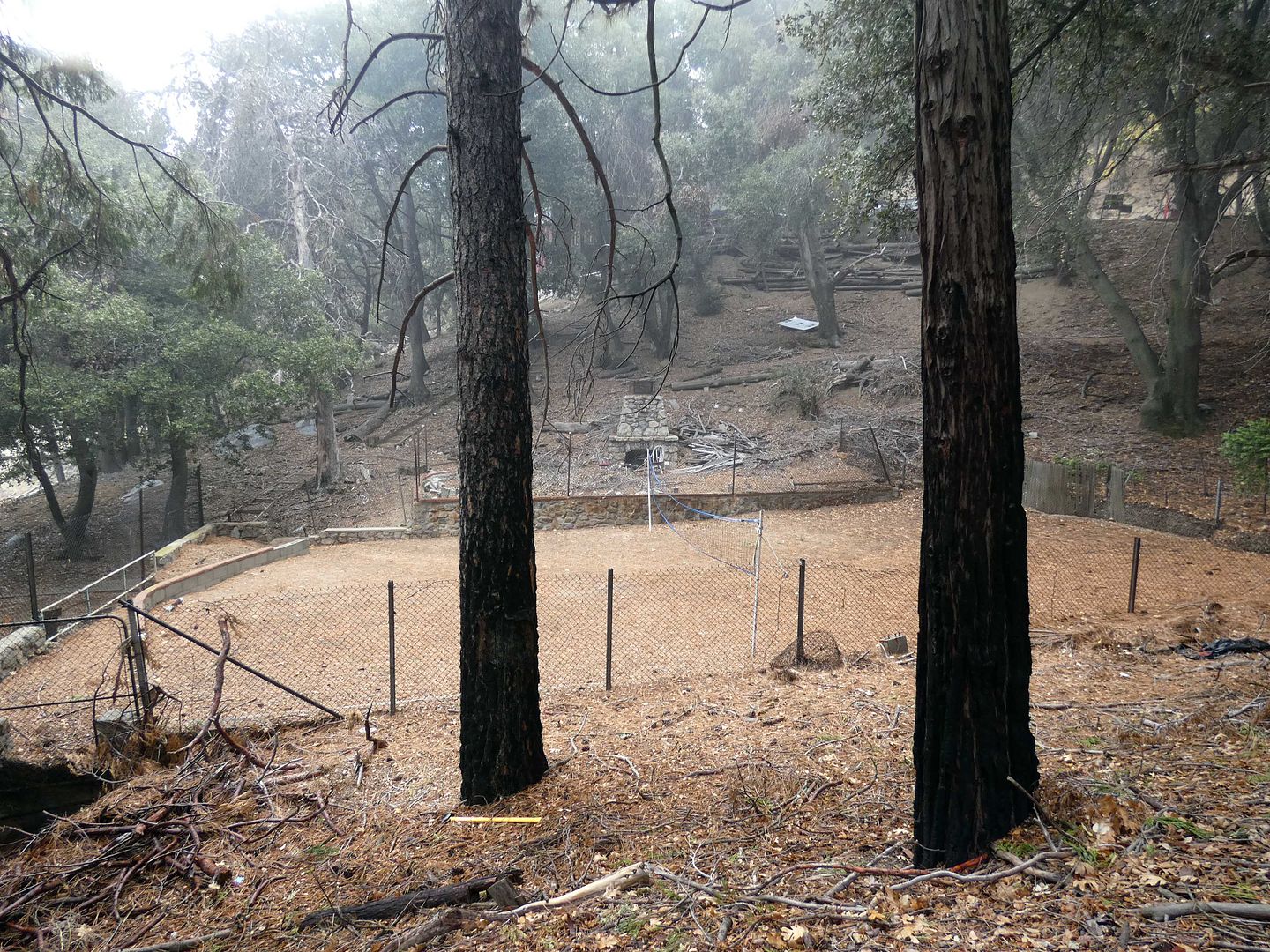
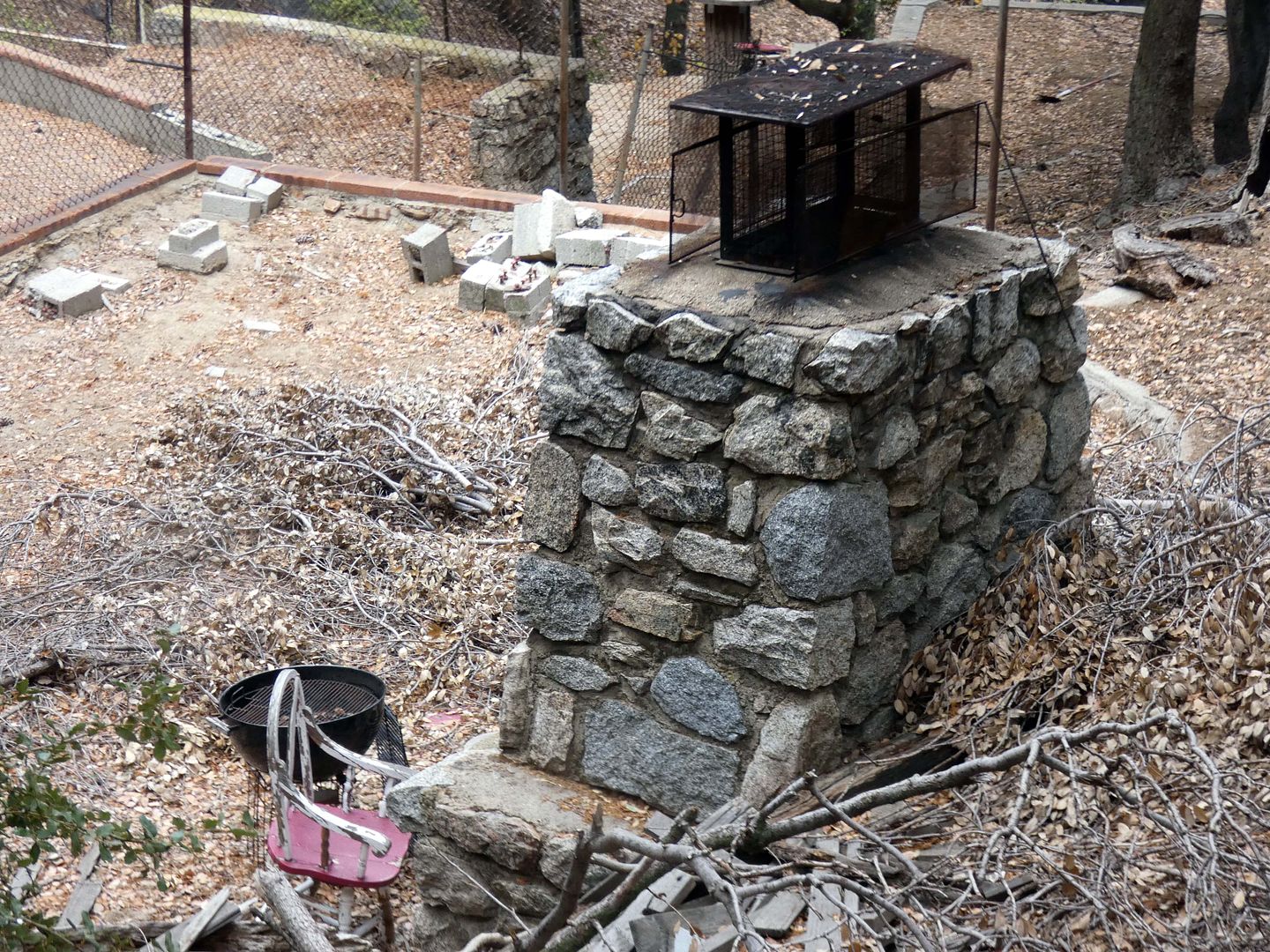
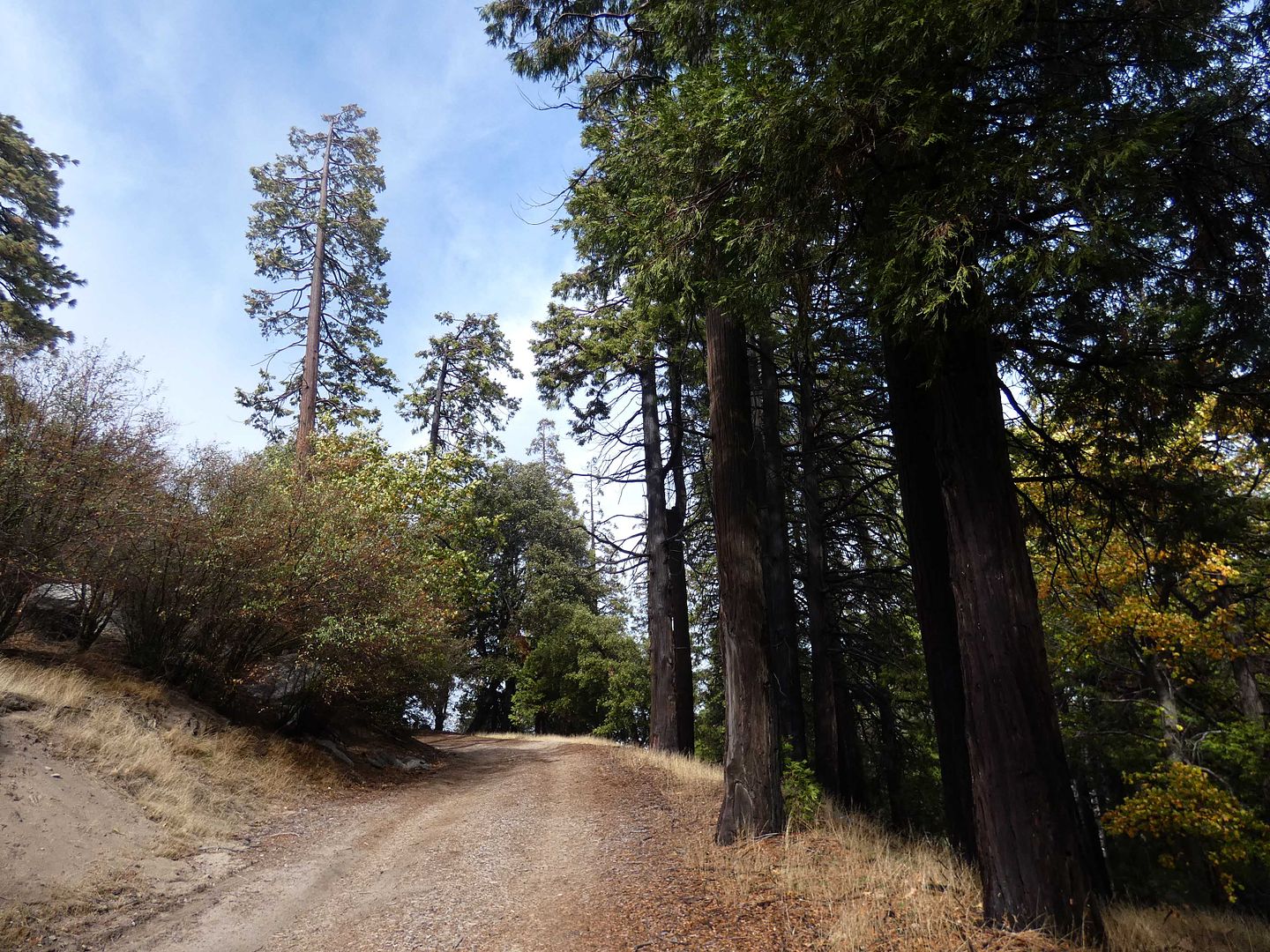
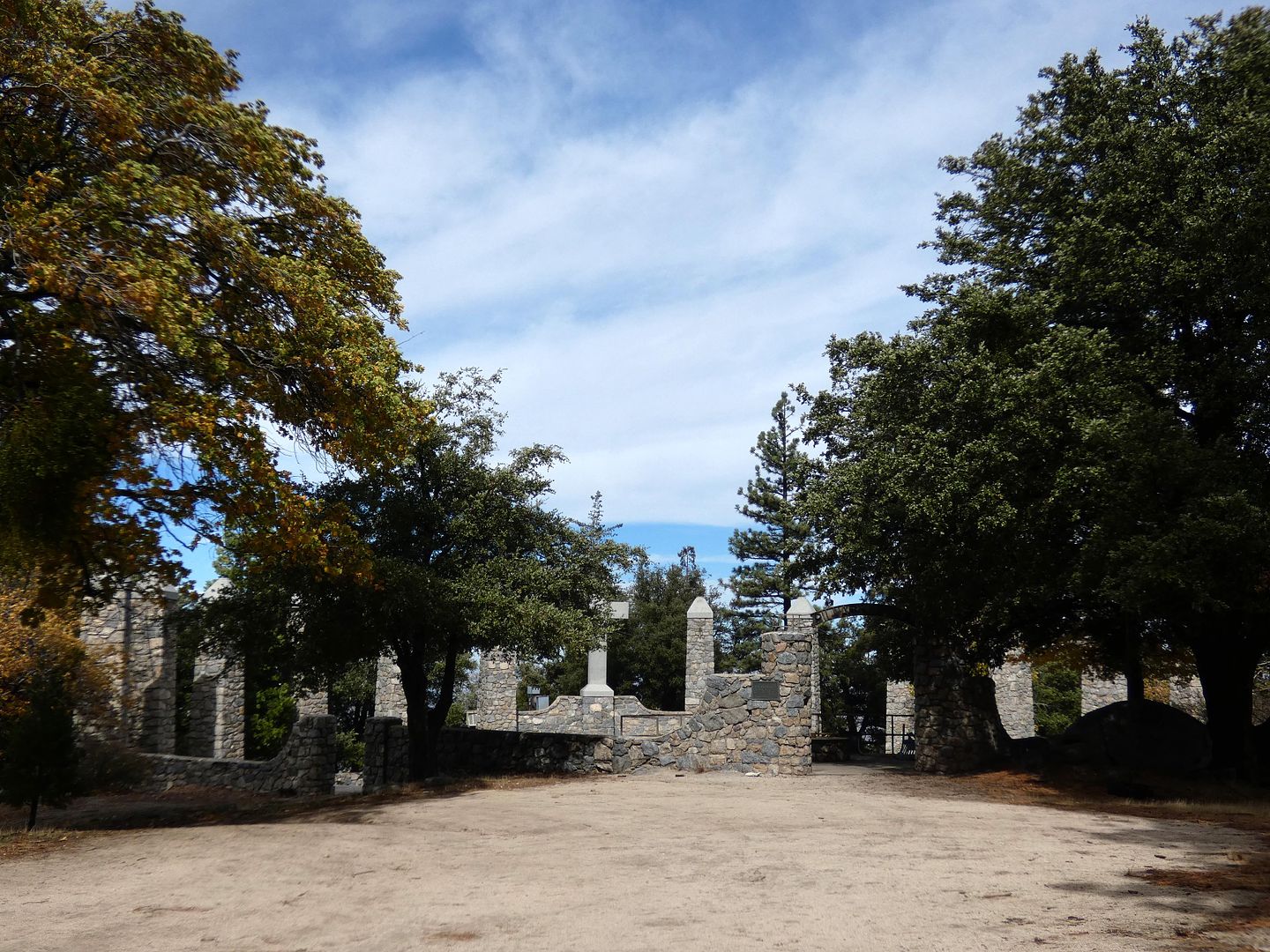
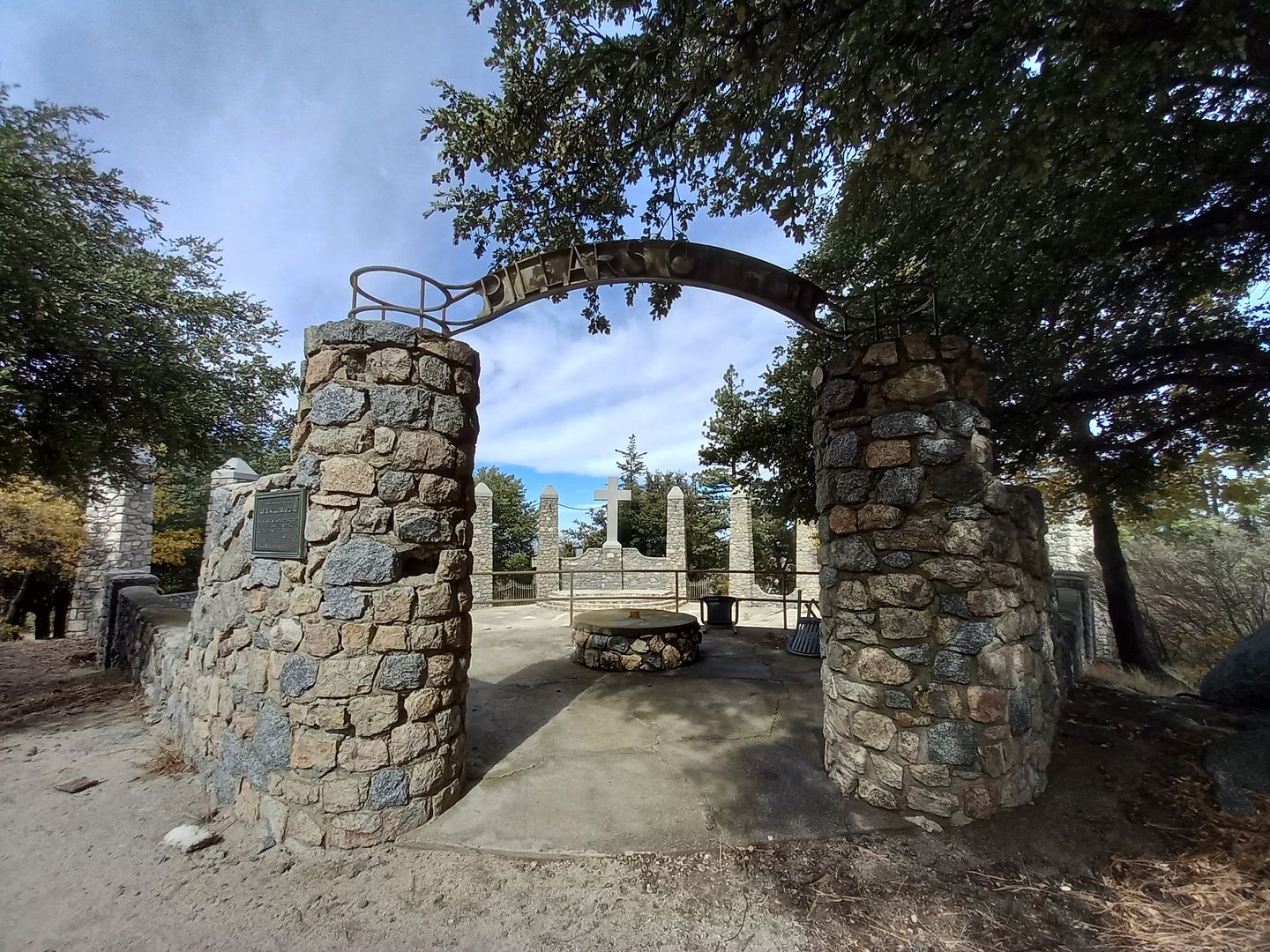

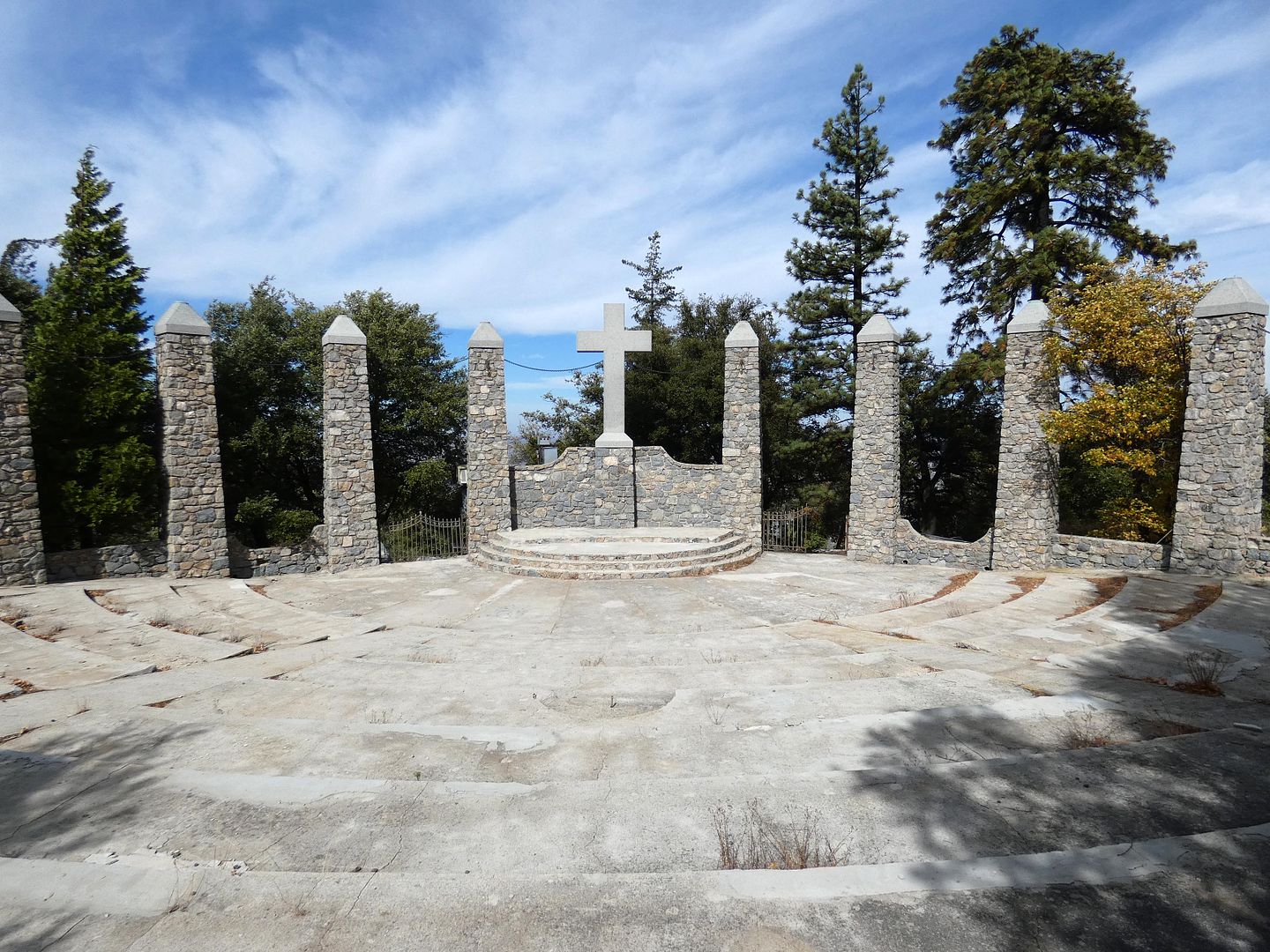
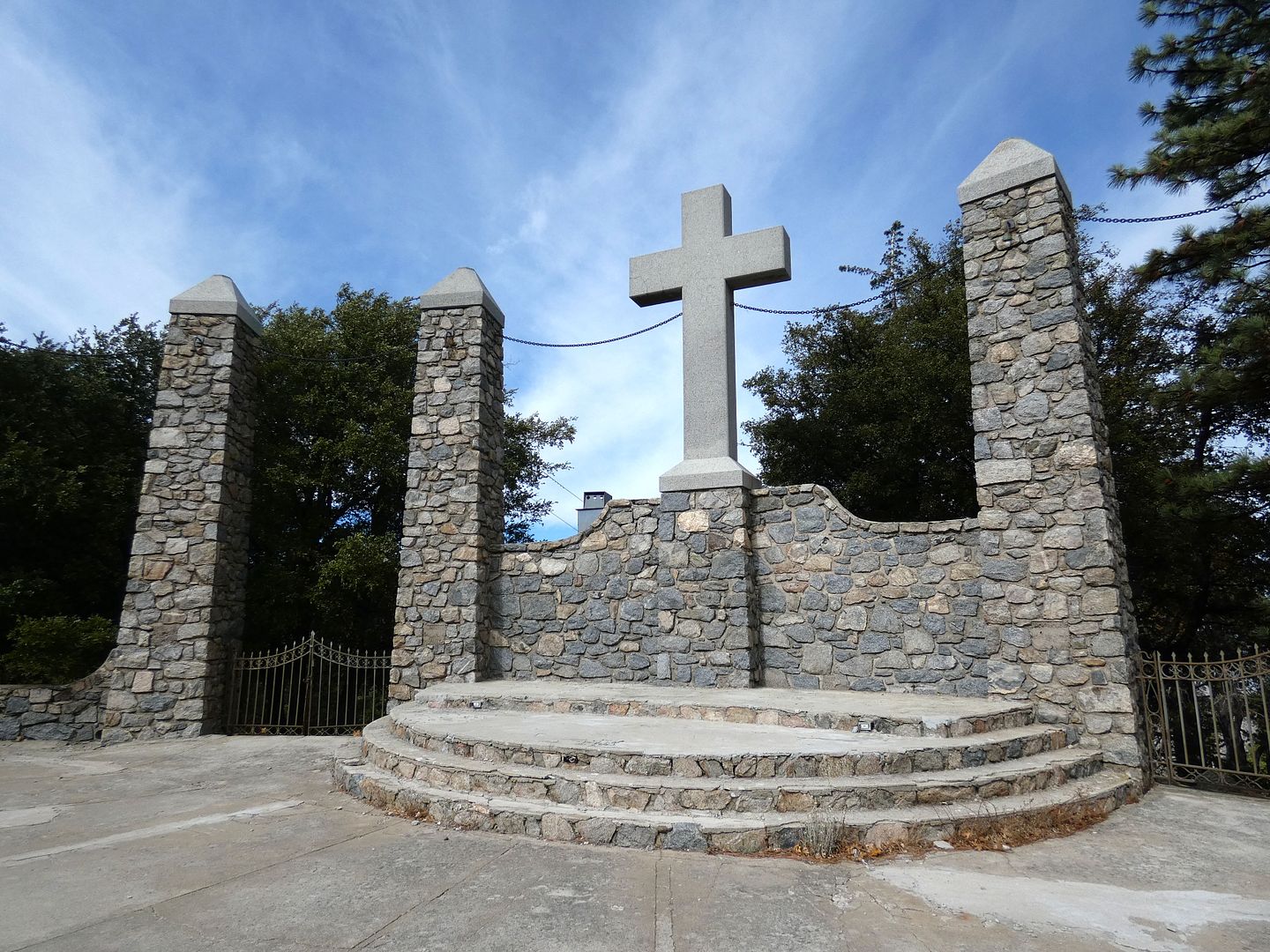
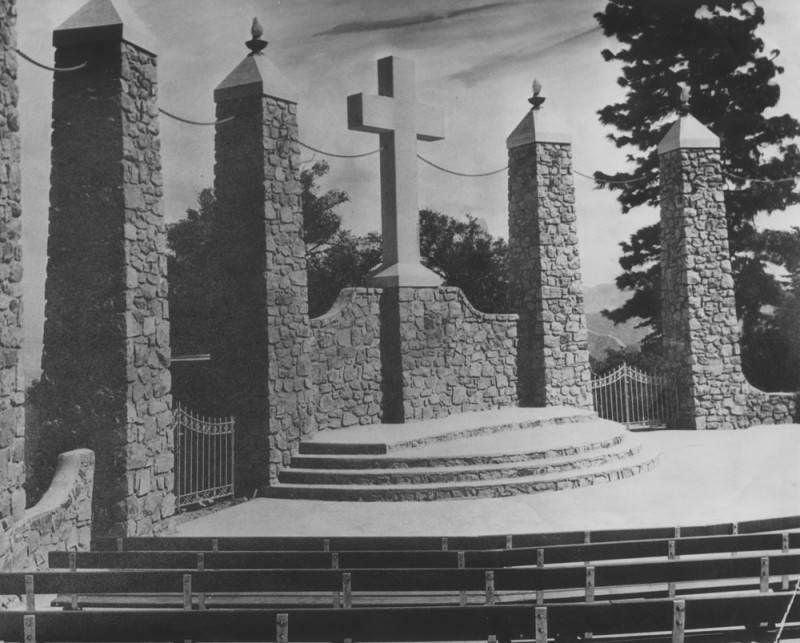
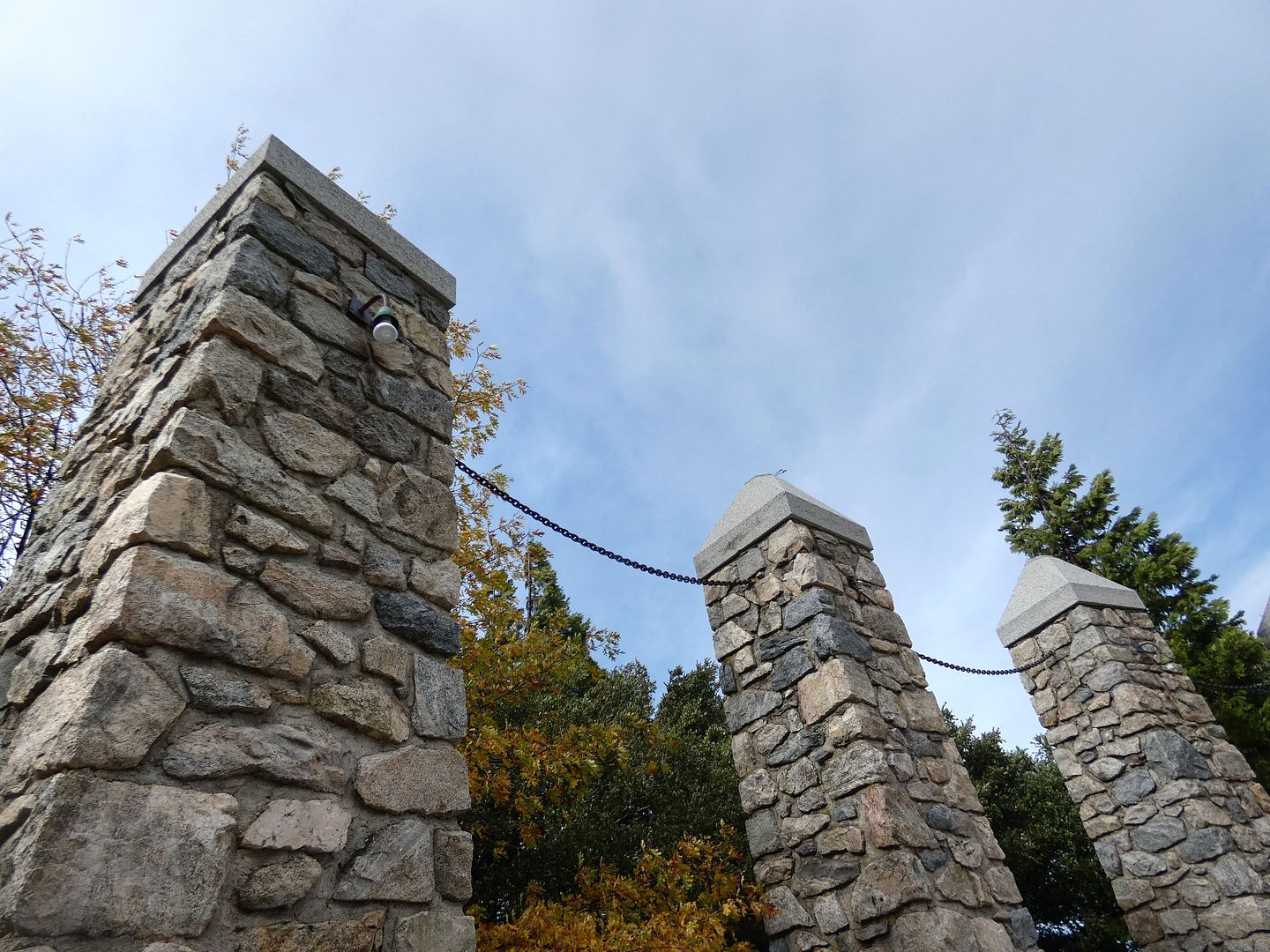
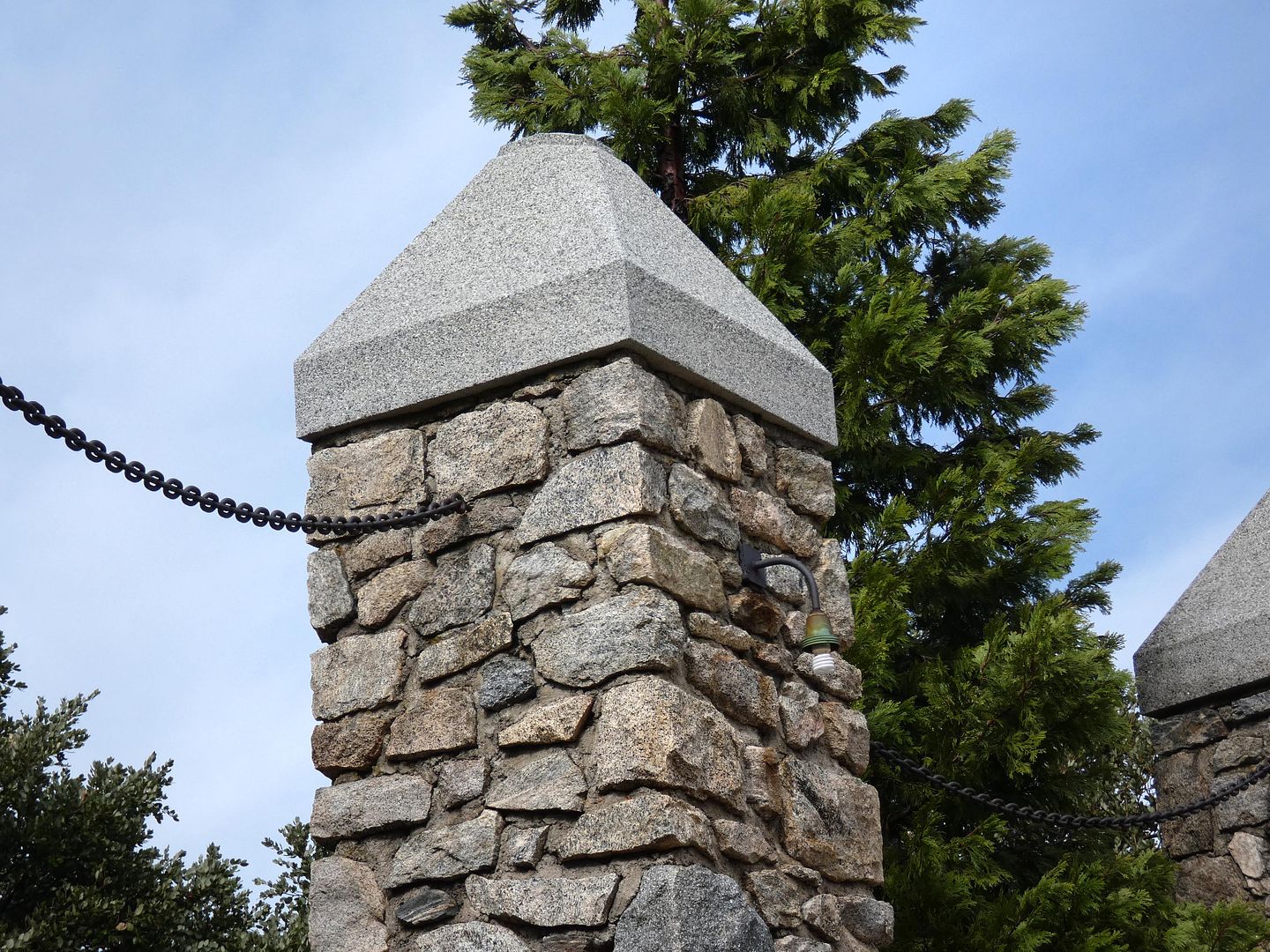
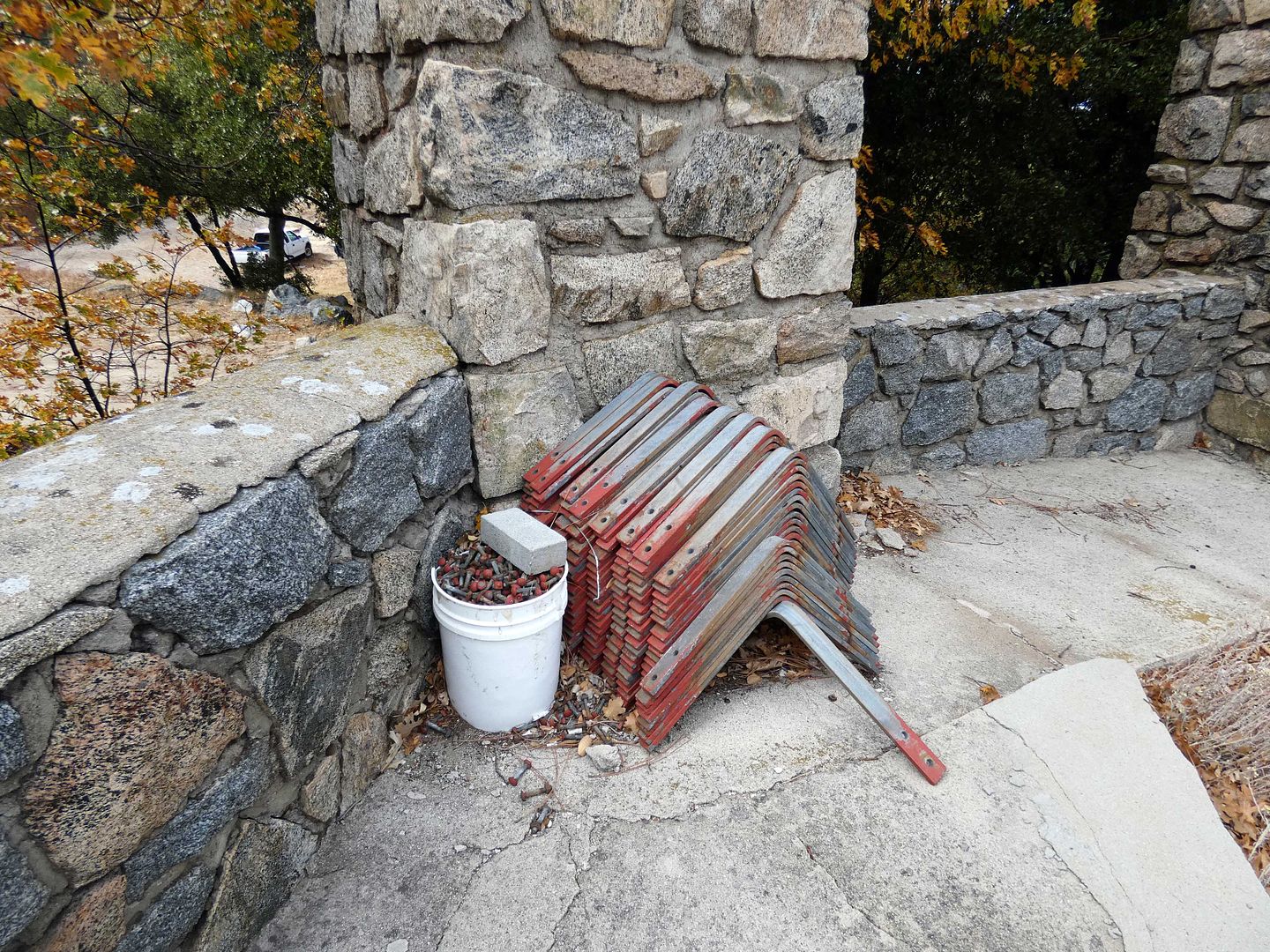
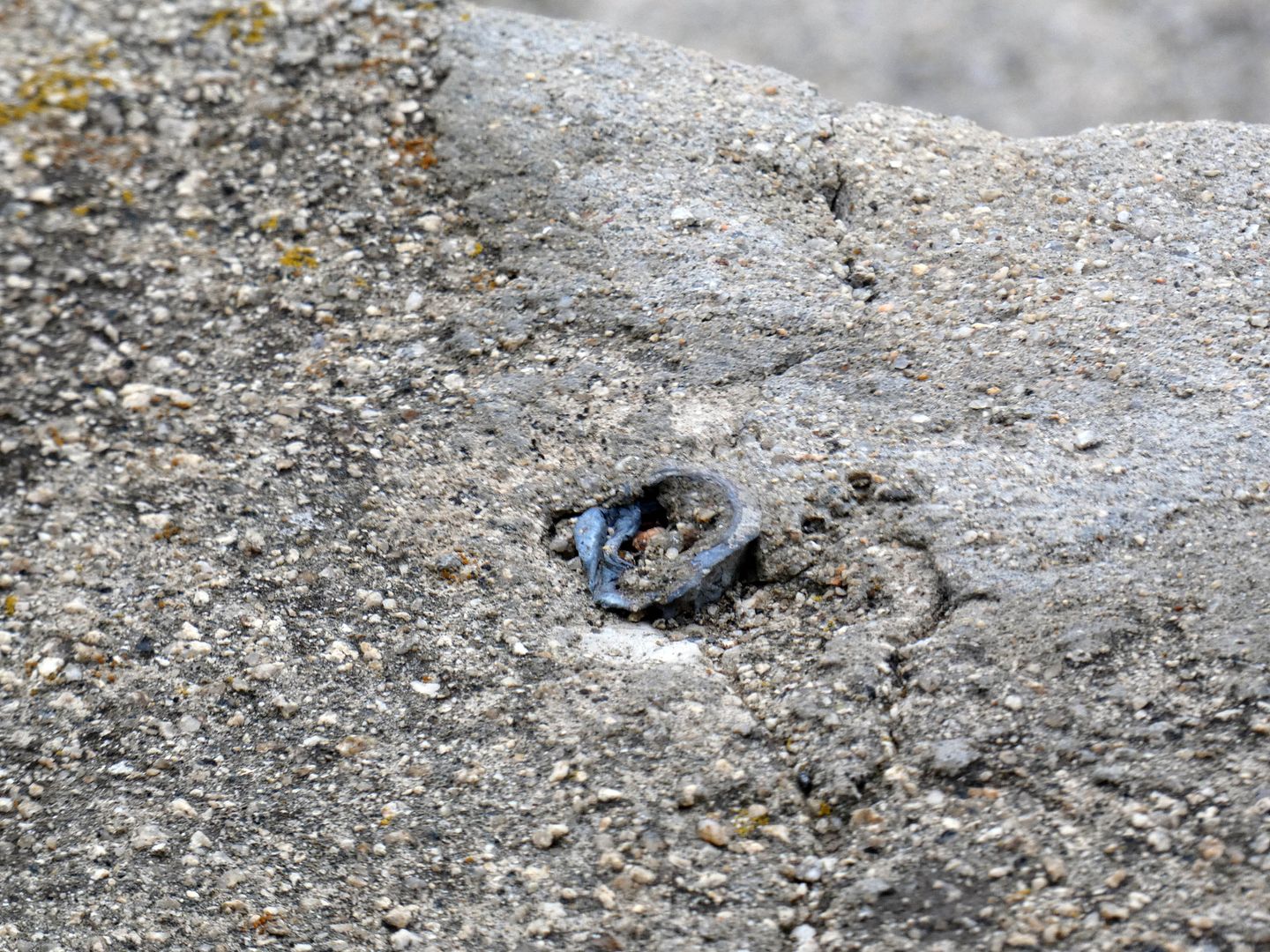
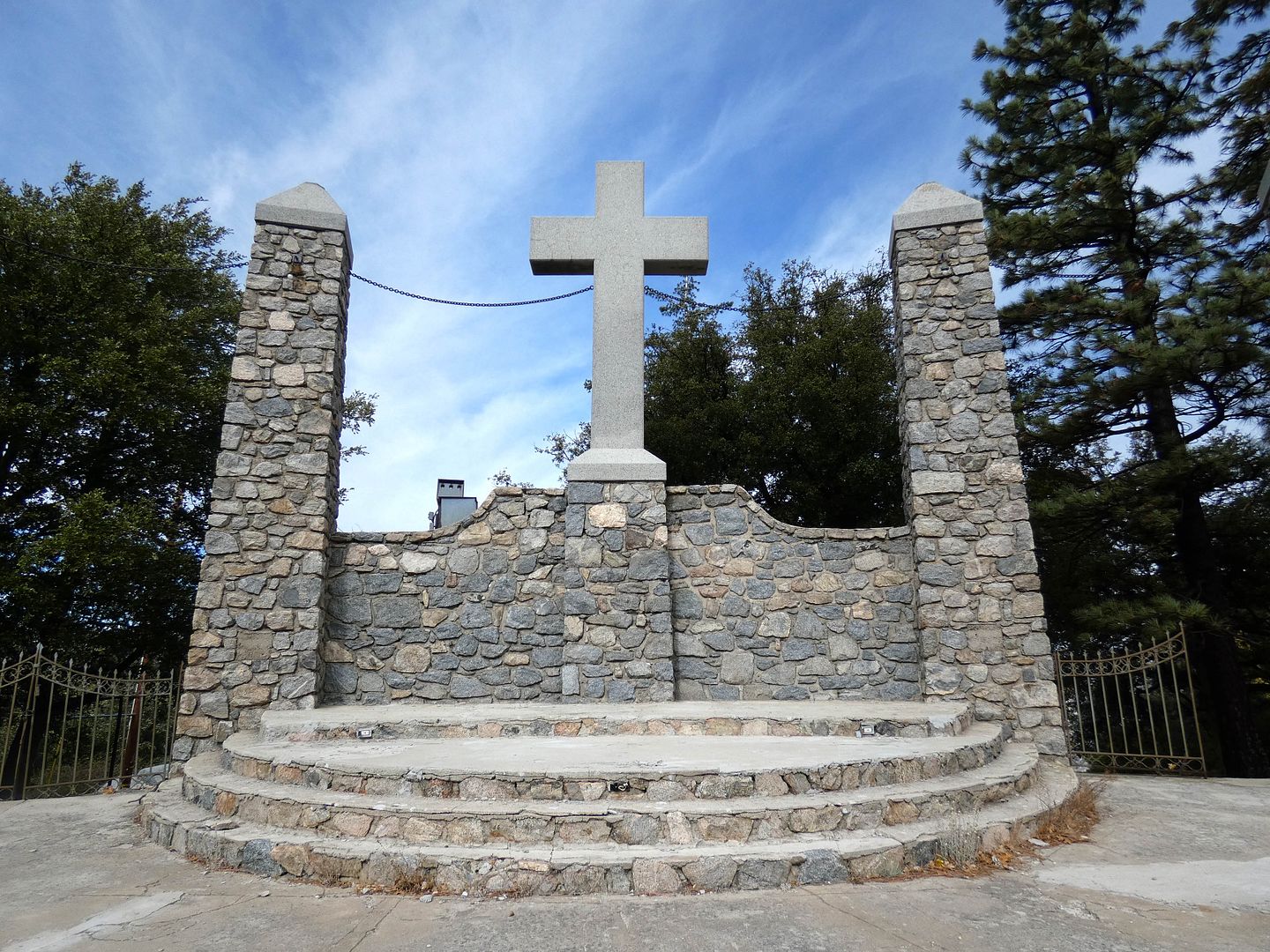

As entered through the camp's stone columns (which are usually secured by a locked gate)...

...visibility was so low, I wasn't sure if I'd be able to see anything on our tour.

I wondered what the weather was like when A.K. Mozumdar—the "World-Famous Metaphysician of Calcutta and Los Angeles"—chose this site, after moving to California from Washington State in 1920. "Prince" Mozumdar, born in India in a high caste (though no proof of any royal lineage), had been quoted as saying it reminded him of home.

And as I entered the outdoor amphitheater where his followers would gather...

...its former snack bar standing in ruins immediately behind the altar...

...I thought to myself, "Oh great, now I'll have to find a way back here to see it in clearer weather."

After a brief introduction at the pillars, under the wet trees that kept raining down on us every time the wind rustled its leaves, our group trudged on, first down a set of steps constructed by the Peace Corps in 1964...

...past one of several "stairs to nowhere" (this one having once led to one of the many wooden lodges that have burned down over time)...

...and through a portion of the 100-acre property located on the side of Job's Peak.

When Mozumdar selected the site, it actually already had a "Holy Place"—a rocky vista point considered sacred by local Native Americans, overlooking what's currently a local reservoir, Silverwood Lake. (Of course, we couldn't see anything in the fog.)

The Holy Place is pretty much preserved in its natural state, save for a few wooden benches installed at and near the bases of the trees...

...to help encourage quiet contemplation.

We then moved on as a group along a mulchy single-track trail...

...which led us through the pines...

...past some arboreal fire victims...

...across a rickety wooden bridge...

...and to another set of stairs to nowhere...

...which presumably led to another lodge (circa 1932), burned to the ground by fire in 1978.

This was all part of the campus created by Mozumdar—who his followers considered to be one of the great spiritual leaders in the world. Some even referred to him as a "prophet."

He was a member of the New Thought Movement who was born into Hinduism but had converted to Christianity—although he actually incorporated some elements of both Hinduism and Hebrew tradition into his many lectures and writings. While in Seattle in the early 1900s, he founded the Christian Yoga Society (which later became the Universal Messianic Church).

Early on, Mozumdar spent most of his time on this property camping, instead maintaining a primary residence in Los Angeles (in Hollywood, of all places). But a number of facilities were built in the 1930s—and, in 1938, he commissioned the Temple of Christ (a.k.a. Mozumdar Temple) from architect and builder William P. Lodge of San Diego (who was also one of Mozumdar's most devoted followers).

In a 1948 article, the Crestline Courier called the temple the "Pearl of Crestline"—but unfortunately, it wasn't completed by the time Mozumdar passed away in 1953. (Media coverage at the time blamed building material shortages during WWII.)

In 1951, Mozumdar arranged for the YMCA to buy the property from him—but as part of his will, he gave the money back to them in order to fund the temple's completion.

At 4700 feet of elevation, it's certainly subjected to the elements—but fortunately, it's currently maintained and operated by its owner, the Unification Church.

The church's founder, Reverend Sun Myung Moon, passed away in 2012. His wife, Dr. Hak Ja Han, still leads it from her home in Korea.

The Unificationists (a.k.a. "the Moonies," though that's been a controversial nickname) promote the unification of all religions, of all countries, and of all people—which isn't so far-fetched from what Mozumdar preached.

While the Unificationists also believe in Jesus, they followed Reverend Moon as the self-declared Second Coming of Christ.

It's nice to see Mozumdar still honored inside the temple...

...which was so impressive when it was built...

...appearing much like the Taj Mahal...

...it was the subject of many local postcards of the time.

After Mozumdar died in 1953, the YMCA operated the property as a girls' camp (and, at least at one point, a camp for deaf children) until selling it to the Unificationists in 1975.

Unfortunately, the circa 1935 swimming pool—once a popular gathering spot back in Mozumdar's time—has been emptied and dismantled for safety concerns.

But its rock walls and stone fireplace remain.

After lunch and a bit of a talk in the temple, our group dispersed—just in time for the sun to start coming out.

I hightailed it back to the Pillars of God to capture the "outdoor" temple in some semblance of daylight.

When Mozumdar first set up camp in the San Bernardino Mountains, it was with only 10 acres—which was all he could afford at the time.

But thanks to benefactors like William and Minnie Splane, he was able to expand the property and build his Pillars of God, also by William P. Lodge.

This amphitheater features 12 pillars in a semicircle, representing the 12 apostles of Jesus Christ—and reaching so high, it's as though they "prop the sky."

The speakers platform hosted not only Mozumdar himself on Sunday afternoons—but also various choirs and choruses and even Hollywood star Jane Russell herself, who performed at a fundraiser to build a playground in the neighboring community of Cedarpines Park.

circa 1941 (via LAPL)
Each of the 12 pillars used to be topped with a light fixture and flame-shaped glass globe...

...only two of which were still extant in 2014 and were removed that same year.

The folks working on restoring the property say they hope to find a way to reproduce a new set and replace them.

The amphitheater used to accommodate a seated audience on wooden benches, but those are (mostly) gone, too...

...with only some metal framework and rivet holes remaining.

Today, Camp Mozumdar is run by Reverend Juan Morales (born in Acapulco, Mexico) as an interfaith camp/retreat center—one that he says he hopes can interact more with the surrounding communities and open up more to the public.
But there's quite a bit of cleaning up to do before they can throw open the gates. And some security measures to take to keep the vandals and ne'er do wells out.
Of course, whenever I go anywhere, it's just to experience it firsthand—maybe absorb some of its energy—and to document it.
Rim of the World Historical Society usually offers public tours of Camp Mozumdar around October/November and again around May/June. I'm a proud member since Summer 2021!
Related Posts:

My grandfather was the architect
ReplyDelete